Another Bouncing Ball: April 2009 Archives
 At Lisa Harris through May 2.
At Lisa Harris through May 2.I responded:"No matter how she crowds her space, nobody's home.... Her drawings appear to be waiting for you to leave, in order to disappear."
Please translate.
There's a mute, recessive quality to her drawings that comes close to threatening her form.Because I realized I wasn't connecting with him at all, I added:
I was going for an improvisation rather than a review, a moment instead of a full-dress regalia. Torres, co-editor of Aristos, disapproves. Aristos passes out awards for art writing each year.
I think of it as a good thing.
Briefly stated, (the Aristos awards) are given for objectivity in arts criticism, scholarship, or commentary. Such objectivity involves the recognition (usually implicit) that art has a particular nature, and that the art of the present necessarily bears a fundamental similarity to the art of the past. Often, the resulting conclusion is that a work regarded as art by experts is not art at all. The fullest explication of the point of view underlying the awards is found in What Art Is: The Esthetic Theory of Ayn Rand.Ah, Ayn Rand. The high priestess of unregulated capitalism, the celebrant of selfishness, the enemy of community. I am delighted to disappoint you, Mr. Torres.
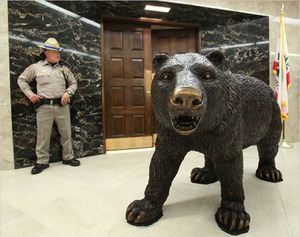 The New York Times had the story first, with the SF Chronicle trailing. It's never good to trail a national paper on your local story. Those who think getting stomped on such a trivial matter doesn't matter haven't worked at a newspaper. A four-footed bronze animal blocking the entrance to the governor's office qualifies as an event. The Chronicle should have had its paws all over it.
The New York Times had the story first, with the SF Chronicle trailing. It's never good to trail a national paper on your local story. Those who think getting stomped on such a trivial matter doesn't matter haven't worked at a newspaper. A four-footed bronze animal blocking the entrance to the governor's office qualifies as an event. The Chronicle should have had its paws all over it.Jon Carroll's piece is nice, but I wish the paper had sent its art critic, Kenneth Baker. Mr. Minimalism would not have been amused. When he rouses himself to lament, it is always worth reading.
Carroll the spoilsport mentioned the real problems real bears have in California. As metaphors and representations, however, they continue to thrive.
My favorite bear opens Theodore Roethke's Four for Sir John Davies, a passage titled The Dance:
Is that dance slowing in the mind of manI am also exceeding fond of Jeffry Mitchell's bears. If Roethke's had sexual congress with Winnie the Pooh, Mitchell's would be their issue.
That made him think the universe could hum?
The great wheel turns its axle when it can;
I need a place to sing, and dancing-room,
And I have made a promise to my ears
I'll sing and whistle romping with the bears.
For the are all my friends: I saw one slide
Down a steep hillside on a cake of ice, --
Or was that in a book? I think with pride:
A caged bear rarely does the same thing twice
In the same way: O watch his body sway!
This animal remembering to be gay.

(Francis Bacon, click images to enlarge.)
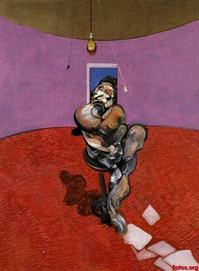 Nor would Bush have been at home in the Dark Ages. His privileged and tidy-minded version of the evangelical was unknown in the 14th century. Saying that century's version of a spiritual aesthetic is notable in the age of Obama is not to link it to the stupidities of his predecessor.
Nor would Bush have been at home in the Dark Ages. His privileged and tidy-minded version of the evangelical was unknown in the 14th century. Saying that century's version of a spiritual aesthetic is notable in the age of Obama is not to link it to the stupidities of his predecessor. Belief is hardwired into temperament and capacity, not just experience. And yet with its ruinous temperature changes, unending wars, failed economies and corruption at the core of the Roman Catholic Church, the European 14th century serves as the model of a culture so decisive it overwhelms personal inclination.
What can be said of a world in which people crawled to church on bloodied knees along streets lined with stinking corpses to pray for the courage to kill the Jews? (See, Barbara Tuchman's A Distant Mirror: The Calamitous 14th Century.)
That mirror continues to reflect darkly. In the aesthetic realm, this species of dark sight projects an inner light. It is not today's dominant vision. There is no dominant vision, but it's a force growing ever more prominent. Below, a few samples, not at all definitive.
1. Philip Guston 2. Susan Rothenberg 3. Joseph Mills 4.Nigel Cook and 5, 6 and 7. Anthony Pontius at Roq La Rue through May 2.
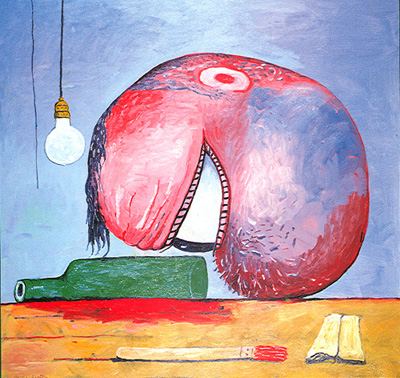
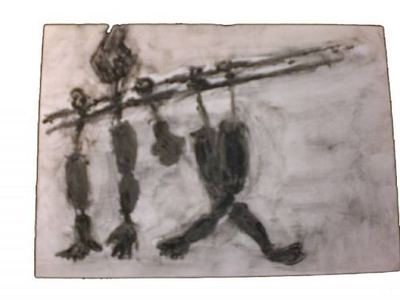
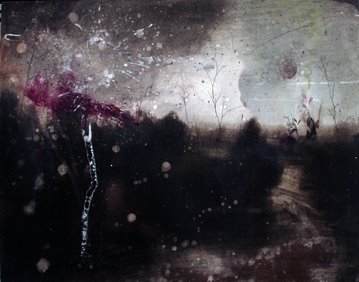
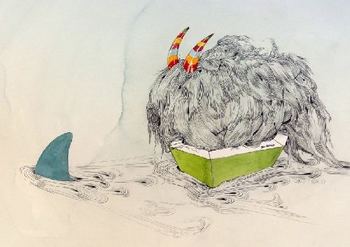 At Gallery4Culture till Friday.
At Gallery4Culture till Friday.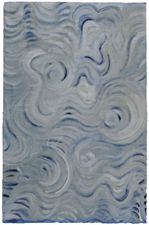 Hers isn't a name that leaps to mind when talking about the region's prominent artists.
Hers isn't a name that leaps to mind when talking about the region's prominent artists. For decades she has labored in semi-obscurity, praised when she exhibits but prone to drop out of sight for years on end before surfacing again to startle those who see her work. It's classically Northwest in tonality and aspiration, using dim tones to seek celestial things in gouache or opaque watercolor on paper.
Forward momentum comes from pulses of purely abstract form, small shapes aspiring to be squares but distorted by the rhythm of the piece into more fluid configurations.
Her new work is full of a rare (for her) tonal shine. For every cool blue or silver gray painting in gouache, there are watercolors devoted to warmer shades, bright lights abstracted from rising or setting suns.
Skilling's affinities also run toward the early American modernist Authur Dove. Like him she stakes out a quiet thing and fills it with air.
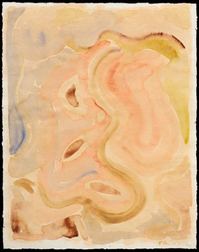
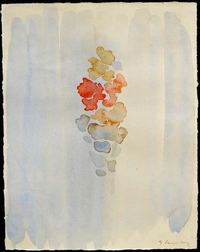
At Greg Kucera through May 16. Also at Kucera, Victoria Haven. (Another Bouncing Ball review of Haven's show here.)
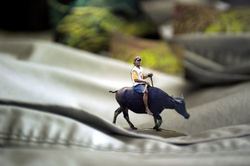
Stephanie Syjuco uses the tactics of bootlegging, reappropriation, and fictional fabrications to address issues of cultural biography, labor, and economic globalization...She constructed small cut-out dioramas taken from tourist photographs of the Philippines and placed them conspicuously throughout her apartment. She then photographed her living space as a personal travelogue....By examining and constructing objects with fictional identities and histories, the artist reveals a larger truth: that we constantly invent narratives about ourselves and about others.She's got it all - identity politics, race, the global economy, the shifting mirage of home base and a creative use of multiple media.
As Charles Mudede wrote about her 2005 exhibit at James Harris, these issues have legs. He praises her for not being
I'd like to know who's dazzled by that phantasmagoria, besides the heads of international corporations, none of whom are quite as confident as they once were, seeing that global capitalism is on the ropes.dazzled by the phantasmagoria of planetary capitalism but instead uses its physical and visual commodities as the very material (and subject) of her sculptures, photographs, and media installation.
Back to the art. It's deeply illustrative of its content, which makes it feel like homework. Mudede appears to be in love with the artist's politics. Art critics can be swayed by underdog efforts, but art doesn't care. For its own reasons, it favors or ignores lunatics in asylums and painters paid by the court. All the good will in the world cannot turn a weak form into a strong one. I do not claim that Syjuco will never get to the genuine, just that she's isn't there yet.
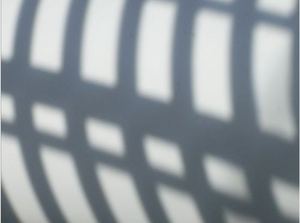
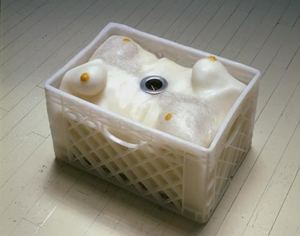 Harrison Higgs' drains are clogged..
Harrison Higgs' drains are clogged..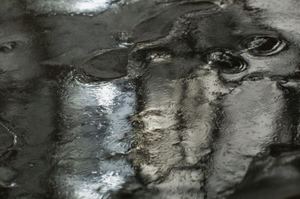 But Buster Simpson's serve a useful purpose:
But Buster Simpson's serve a useful purpose:
Talking in museums is almost always an attempt to tour guide. I try not to bother others as they contemplate art in museums, but sometimes, when confronted with a genuine art critic emergency (Is there an art critic in the house?) I intervene, with varying results.
Latest entry, Momus (Nick Currie). Says Art Fag City:
Momus gives a highly entertaining tour of Schirn Kunsthalle's Darwin exhibition, fabricating virtually every bit of information he imparts. Don't skip this video.
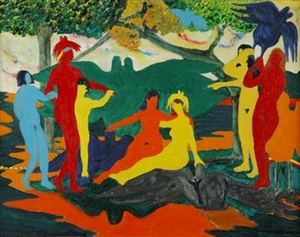
This is work from a consumerist eye, an exercise of interpretation, the work of others used in a search for my own voice. Identity is no longer based on creation of something from nothing, but an attachment to a collection of images and ideas, juxtaposed just so, to create 'the individual.' Like listing bands, television shows, books and movies as a means to attain a whole. As we surround ourselves with the ghostly remains of history that passed us by, the longing to have taken part in it, overwhelms us and confines us to a life of digging through the trash to find ourselves.Appropriation not only continues, it's edging close to the core of contemporary aesthetics. Increasingly, artists explore the ramifications of living in a borrowed world on borrowed time.
The artist's statement for Second Peoples at The Helm Gallery in Tacoma offers an excellent formulation of the position:
We have coined the name 'second peoples' to describe the people who arrive late on the scene, after the beginning, after the abundance, after the traumatic event, after everything's been said and done, after, even, the end.Note to self: Get thee to Tacoma to see this show. (Till May 14)
We are the second peoples. Chances are, you are too. This is an exhibition dealing with what it means to be second. We inhabit a landscape of iteration, reverb, elision, and generational noise. Our corner of North America - these mountains, that timber, this rich land - belonged to someone else. Our popular culture-those TV shows, that movie sequel, this new band that is so retro they're cool-belonged to some other time. Our art is that way, too: this gesture to Donald Judd, that nod to Philip Guston, that Eva Hesse wink.
We are interested in locating the coordinates of this second position. How did we end up here? What is our responsibility for what happened before us? What is our responsibility for the things that happen now in our names? Like Simone de Beauvoir argues in "Second Sex", we think we should be free to transcend ourselves as subjects, to not be confined to existential leftovers.
Contemporary art is concerned with this alchemy, trying to turn second-handedness into first-handedness, reversing the flow of energy, presenting not representing, creating value from valuelessness. We think this is a worthwhile activity. We also think it is a fraught activity. The work in this exhibition exposes some of the fractures created by this ceaseless turning, and also dreams of a third position, a reification of our desire to escape, a momentary place to stop.
I'm not convinced Lux moves Thompson any further than Sherrie Levine took Walker Evans in the 1980s. At least he's conscious of his strategy.
Compare George Benjamin Luks' Danty from 1915 at the Frye Art Museum (#3)
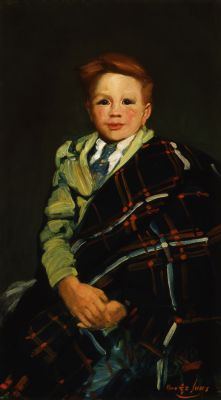 to Ryan Hixenbaugh's Untitled (kid) from 2008.
to Ryan Hixenbaugh's Untitled (kid) from 2008.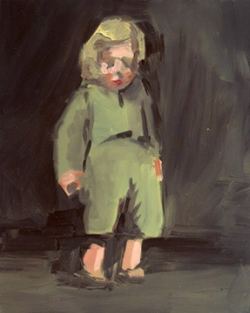
Same demented intensity. Sometimes an echo is just an echo.
Savonarola and Pinard are disgraced names, yet some of their censorious ideas are still with us, nagging at the edges of art. "To impose upon art the single rule of public decency is not to enslave it but to honor it," Pinard claimed.
Ah, the decency rule. Beaten back early in the 20th century, it resurfaced with new vigor during the Cultural Wars, crippling the National Endowment for the Arts and encouraging censorship across the country.
In that aftermath, art critics are loath to appear morally offended by any work of art, no matter how distasteful they find its content. What critic wants to fuel the anti-art fire? Besides, since the advent of modernism, supporting any kind of morality hasn't been considered art's job.
The 19th-century notion of art for art's sake acquired a spine in the modernist lexicon. Instead of denying the existence of any content but style, modernists claim that art is entitled to any content if the aesthetic can support it.
As W.H. Auden wrote in In Memory of W.B. Yeats (a passage he later considered too preachy and excised), poets have a right to say anything as long as their language is supple:
Time that is intolerantAll this Roberta Smith knows well. But because she chose not to confront her underlying moral hostility to Adel Abdessemed's work until her review's final sentence, her piece is full of a mystifying contempt. (Review here.)
Of the brave and innocent,
And indifferent in a week
To a beautiful physique,
Worships language and forgives
Everyone by whom it lives;
Pardons cowardice, conceit,
Lays its honors at their feet.
Great lead:
You can hear the wheels of the international art-stardom machine turning in Adel Abdessemed's first big commercial gallery show in New York, but they don't get much traction.It puts readers on notice that she is going to take this guy down. But then she doesn't. Why? Because the work pushes back at her.
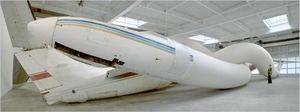
"Like Mother, Like Son" (above) consists of three small airplanes, cut in half and extended with enormous and beautiful tubes of white felt. They're something like stretch limos, except that they twist together, like snakes locked in a battle to the death.Given this sculpture and her grudging admiration, how can she justify the paragraph that preceded it?
The works themselves offer a lexicon of the latest biennial fashions: a mixture of identity politics, Conceptual strategies played out in real life and visceral punch lines. An array of art mediums is used: drawing, installation, video, photography and sculptures that usually involve found or replicated objects.She can't justify it. "Latest biennial fashions?" That's code for I-hate-you. He's all about nature red in tooth and claw. She's repelled but doesn't say so, because (see above) art critics hesitate to review anybody's morals. Wouldn't it have been better if she had opened with an admission of moral qualms? Morality is an aesthetic sinkhole, but when a critic's in one, an admission is brave and honorable.
Clarity comes at the end the review, and only about one piece. Since I don't think the artist is justifying the morality of organized religions, Smith seems to be angry at the wrong target.
The oppression of women by organized religions is evil beyond words. Mr. Abdessemed should find a better use for his talent.I haven't seen this show, but isn't that his point?
Case in point: Enrico David, finalist for this year's Turner Prize and recently at the Seattle Art Museum thanks to SAM curator Michael Darling.
Born in Italy and living in London, David is a slippery devotee of magical thinking. Even when working alone, he creates the illusion of a merry band. Whether he's embroidering paintings, turning costumes into lampshades and images of black coat racks (with pert breasts) into a chorus to accompany his own version of clowns, his meanings are polished but not fixed.
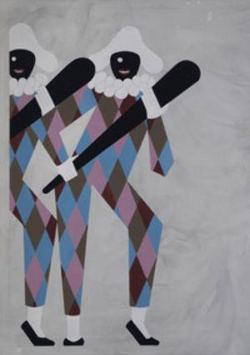 His figures relate to the past but have shed its baggage. He hopes to enchant the world, not change it. For him the world really is a stage, and he refashions its works (furniture, clothing, commercial illustration, puppet theater, advertisements, street lights and party favors) into his souffle of a drama.
His figures relate to the past but have shed its baggage. He hopes to enchant the world, not change it. For him the world really is a stage, and he refashions its works (furniture, clothing, commercial illustration, puppet theater, advertisements, street lights and party favors) into his souffle of a drama.His rigor saves him from whimsy, and his acute visual intelligence from trivia.
In an essay in Frieze, which he opened by declaring, "My name is not Enrico David," he spoke for all artists who do not want to describe their work or have it described for them.
I'm not tour guide, toastmaster, apologist or surrogate. If you are after meaning of fixed value, then you're in the wrong shop. Meaning is a proposition, not an assurance. Meaning is also the name of a nomadic tribe who offer wares to anyone open to conversation.
That conversation is a silent one between the viewer and artwork. In
his insistence that his work not be explained away, he most resembles
those artists who made their mark a century ago. They were purists,
too.
Other finalists are Roger Hiorns, Lucy Skaer and Richard Wright. Winner to be announced Dec. 7. More here.
The King County Sheriff's Office has released more information on the man who stubbled of the woods early Tuesday near North Bend.Anybody could write stubbled instead of stumbled, but in the old world, such goofs were far less likely to appear, thanks to copy editors. Readers now serve that role, but at the PI, the writers don't seem to notice. The story posted at 12:54 p.m. Tuesday. The first correction came in at 2:08. It's now Wednesday morning, and nobody has changed "stubbled of" to "stumbled out of."
Here's the comment thread:
(1) Stubbled? And on the home page, "Brainbridge" and "Bellevue make arrest in homicide"??? Didn't you guys keep any copy editors around?
(2) Didn't you know? All the copy editors were laid off. Ouch.
(3) I can't weight until the staph reproters start taking there owen pitchers.
Allowed into a painting, they have the tendency to take over.
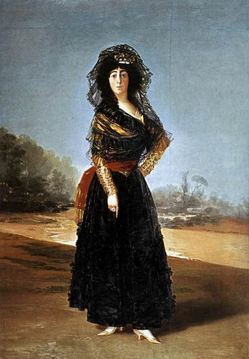 Oskar Kokoschka let them.
Oskar Kokoschka let them.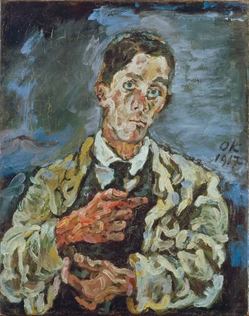 Bruce Nauman assigns them lowly roles (false friend or pugilist).
Bruce Nauman assigns them lowly roles (false friend or pugilist). 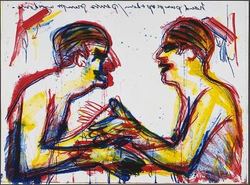 Hannah Wilke, right hand drawn by the left, tracked cancer.
Hannah Wilke, right hand drawn by the left, tracked cancer.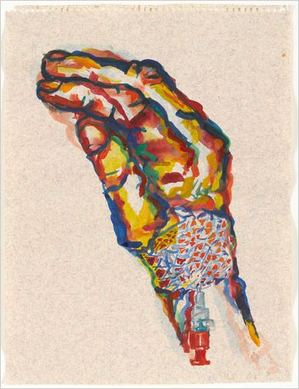
Debra Baxter provided one of hers with a fallback position. She may not be able to take you down, but the brass emblem of intimacy sheltering her middle finger will.
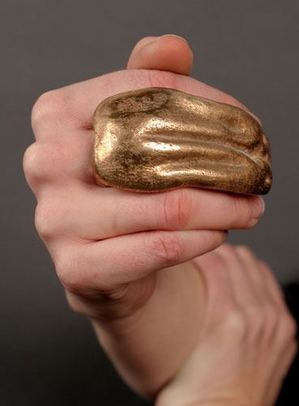
Eduardo Calderon - Caliban in love with unattainable beauty.
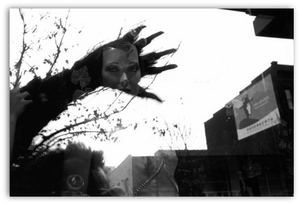 Fred Muram - portrait of the artist as an incompetent. (Besides offending left, note limp right in rear.)
Fred Muram - portrait of the artist as an incompetent. (Besides offending left, note limp right in rear.)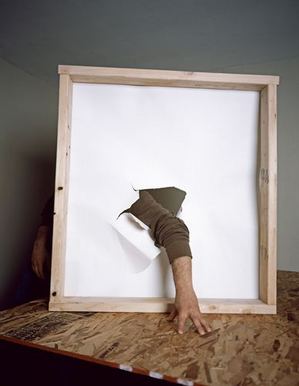
Hugo Ludena - male bonding.
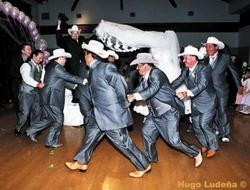 Holly Lynton - riding Mother Earth.
Holly Lynton - riding Mother Earth.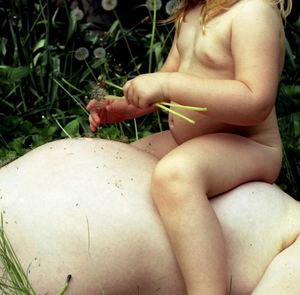
Tim Roda - like father, like son.
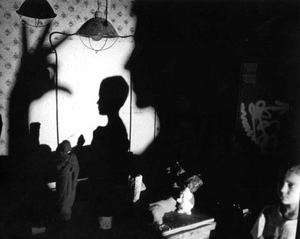
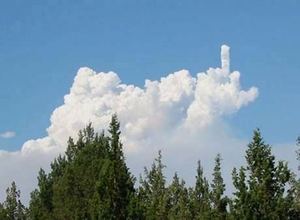 From Charles Krafft, occasional poet:
From Charles Krafft, occasional poet:GOD TOLD ME TO GIVE YOU THE FINGER
God told the Jews to leave Egypt.
He told the Mormons to go to Salt Lake City,
Set up a giant choir, and a 7up bottling plant.
Then God told me to give you the finger
The next time I saw you.
It is not that God is angry with you,
You cannot anger God. It's just that
He wants to be sure
You still believe in miracles.
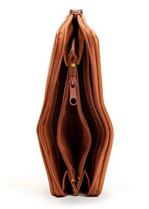
Opens May 1. Web site here.
Artist/curator Sharon Arnold put together a good local list, here.
I can't imagine a better image for the festival than Wheeler's partially unzipped carrying case carried into erotica by metaphoric implication.
Every year this festival gets better. Even in the beginning, when the art wasn't worth noting, the audiences certainly were. (Stories here and here.)
Joey Veltkamp is in this year's lineup with a lovely painting from a series celebrating the 1970s:
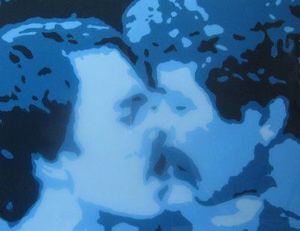
Paul Stout:
Stout's sculptural models are filters through which he distances himself from the world. As a kid, he worked in a hobby store. Systems tinkering was mandatory. The geeky youth he must have been is now blinding us with science and passing it off as art. From his cracked accounts, the tragedy of our cracked relationship with the earth takes slippery and uncertain shape.
 Susan Robb:
Susan Robb: She works in the gap between flesh and fantasy, nature and technology, attraction and repulsion. Her meanings slide across each other like tectonic plates. What grinds to powder between them is the audience's certainty that it knows what's going on.
Roni Horn
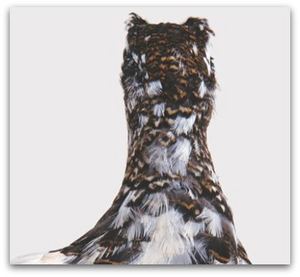
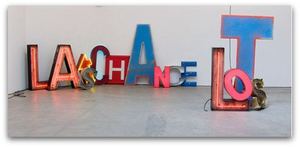 Do the letters spell out Lancelot, LA's Chance Lots or Jack Pierson's title, Last Chance Lost? Just as dyslexics don't limit themselves to one meaning, the work itself invites multiple readings. Pierson's battered cluster of light-struck letters is the equivalent of Thelonious Monk's embrace of wrong/right notes...
Do the letters spell out Lancelot, LA's Chance Lots or Jack Pierson's title, Last Chance Lost? Just as dyslexics don't limit themselves to one meaning, the work itself invites multiple readings. Pierson's battered cluster of light-struck letters is the equivalent of Thelonious Monk's embrace of wrong/right notes...Because everybody knows that in art, wrong can be right.
(Baldessari)
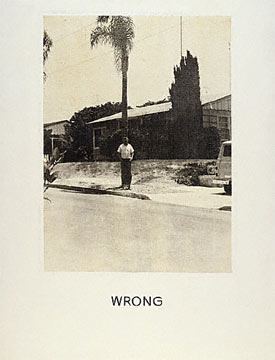 Stephanie Syjuco at James Harris Gallery through May 2.
Stephanie Syjuco at James Harris Gallery through May 2.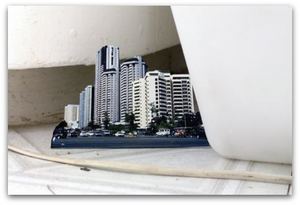
Stevens' Thirteen Ways of Looking at a Blackbird first published, 1917.
Spafford's woodcuts of the same title, 17.5 by 23 inches, from 1975, with a second entirely different set a decade later. Images via Francine Seders Gallery.
That's why for each stanza there are two images, the first from 1975, the second from 1986. (Click to enlarge.)
1.
Among twenty snowy mountains,
The only moving thing
Was the eye of the blackbird.
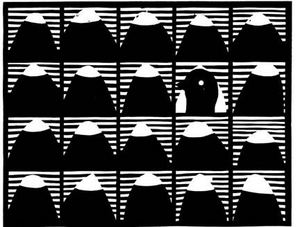
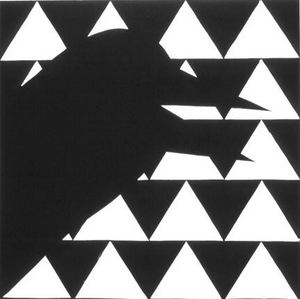
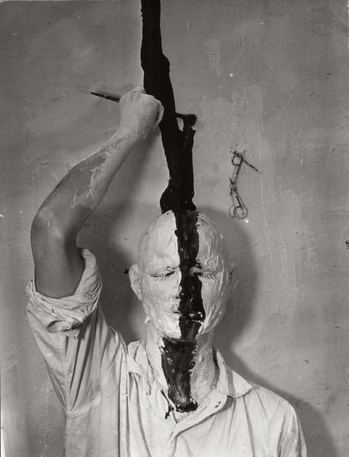
1. Alexander Calder: A Balancing Act, curated by Michael Darling. The idea is to trace the origins of his signature style through his initial efforts to its flowering largely through intimate objects, from 1927 to the mid-1970s.
 Seattle collectors John and Mary Shirley own a hefty share of the 80 objects, many of which haven't been publicly exhibited. Calder has recently been at the Whitney and MoMA. The concentration in Seattle will be the 1940s.
Seattle collectors John and Mary Shirley own a hefty share of the 80 objects, many of which haven't been publicly exhibited. Calder has recently been at the Whitney and MoMA. The concentration in Seattle will be the 1940s.2. Michelangelo Public and Private: Drawings for the Sistine Chapel and Other Treasures from the Casa Buonarroti, organized with the Buonarroti by Chiyo Ishikawa.
From the press release:
Renaissance biographer Georgio Vasari tells us that Michelangelo burned most of his drawings and other preparatory works before his death "so that no one should see the labors he endured and the ways he tested his genius, and lest he should appear less than perfect."Grain of salt: Vasari is not facts on file. The most promising thing about this exhibit is the chance to see the artist thinking on paper - twelve drawings. If he really wanted to hide his tracks, there wouldn't be any.
 For this one exhibit, I'm going to try to break the habit of reading wall text. Maybe SAM will surprise me and skip all that oh-the-master-genius stuff, which wraps the artist in adulatory goo. Press release again:
For this one exhibit, I'm going to try to break the habit of reading wall text. Maybe SAM will surprise me and skip all that oh-the-master-genius stuff, which wraps the artist in adulatory goo. Press release again:In addition to drawings and models that reveal Michelangelo's process, the exhibition includes works by Michelangelo's contemporaries and generations of followers and admirers. Painted and sculpted portraits and commemorative medals celebrating his life demonstrate the "cult of Michelangelo" that had already begun during his lifetime.Cults intend to honor but always alienate, a point well made in a bumper sticker: Jesus, Save Me From Your Followers.
Born in 1917 in Atlantic City, N.J., to a couple who had come north in the general migration of blacks out of the South, he found little he could count on in his early years. By the time he was 13, his father was long gone. He and his younger brother and sister had spent three years in foster care before their mother could afford to send for them. She was a domestic with an irregular income, barely able to hold her family together.
 Lawrence's mother died in 1968, after he had become a major figure in the art world. ``She was proud, but she would have been much happier if I'd had a job in the civil service," he told me. ``For people of her generation, security was everything."
Lawrence's mother died in 1968, after he had become a major figure in the art world. ``She was proud, but she would have been much happier if I'd had a job in the civil service," he told me. ``For people of her generation, security was everything."
As a child new to the neighborhood, he was shocked by the lack of open space, the crush of humanity and the cramped verticality of the buildings. Because he neither played sports nor followed them, he wasn't a big hit with his contemporaries. Nor was he especially drawn to school. He dropped out of high school to help his mother earn a living.
From these unpromising beginnings, he became one of the greatest figurative artists of the 20th century. When asked about what mattered in his youth, Lawrence was quick to give credit where it belongs: to Harlem's black community. He didn't mean only Harlem's extraordinary grouping of painters, musicians, poets and playwrights who befriended him, but the ordinary people with whom he interacted every day.
 His first Harlem break came right away. ``My mother wanted me to be safe when I wasn't at school, so she enrolled me in an arts and crafts program at Utopia House," he said.
On the staff was painter Charles Alston, who recognized the young man's drawing talent. Alston provided him with materials and some technical information, but let him build his painted, cutout cardboard cities on his own.
His first Harlem break came right away. ``My mother wanted me to be safe when I wasn't at school, so she enrolled me in an arts and crafts program at Utopia House," he said.
On the staff was painter Charles Alston, who recognized the young man's drawing talent. Alston provided him with materials and some technical information, but let him build his painted, cutout cardboard cities on his own. Lawrence continued to study with Alston, who became director of the Harlem Art Workshop funded by the Works Progress Administration Mural Project for the Federal Art Project. Alston ran an intellectual salon. Through him, Lawrence met poet Langston Hughes, painter Aaron Douglas, writers Ralph Ellison and Claude McKay. Before Lawrence was out of his teens, McCay was hailing him as a ``peerless delineator of the Harlem scene."
Another important mentor was sculptor Augusta Savage. When Lawrence dropped out of high school to earn money, taking on a series of mind-numbing menial jobs, Savage tried to get him employment as a WPA artist. The first time she took him, he was too young. The following year, she brought him back to sign up.
``She was the first person to give me the idea of being an artist as a job," he said. ``I always wanted to be an artist, but I assumed I'd have to work in laundry or something of that nature."
The heady company he kept encouraged his intellectual interests, and he spent many hours in the Harlem library, studying the history of African Americans, research that would result in his first great cycles of narrative paintings.
He also accompanied various mentors on trips to downtown galleries and the Metropolitan Museum of Art, eventually going by himself on foot, 60 blocks south of his home territory. While still a teenager, he developed an appreciation of early Renaissance art, the murals of Jose Orozco and the paintings of Arthur Dove, John Marin and Kathe Kollwitz.
 I think of Lawrence whenever museums rise their admission fees. He remembered the MET being free. He wanted to go, and the Met let him in. (Robert Frost: Home is the place where, when you have to go there,They have to take you in.)
I think of Lawrence whenever museums rise their admission fees. He remembered the MET being free. He wanted to go, and the Met let him in. (Robert Frost: Home is the place where, when you have to go there,They have to take you in.)
That's why Tyler Green at MAN is right to disapprove of hikes at the gate (here and here) , and Judith H. Dobrzynski at Real Clear Arts is off base, here. Dobrzynski:
I argue that some may want to try variable pricing -- charging people more for various times. The Neue Galerie attempted to do this in 2006, with the exhibition of Klimt's "Portrait of Adele Bloch-Bauer I," but gave it up after public outcry about the $50 tickets. I'm sorry they backtracked; I think they should have tried it, at least long enough to assess its potential.The potential? The potential damage of excluding people is far greater than potential increases to the bottom line.
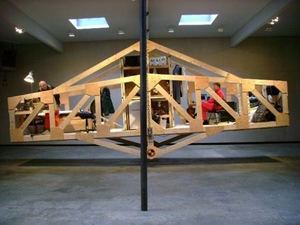 Even when otherwise engaged, they were intimately aware of each other's weight. With a tilt and sway, each affected the other. Should they have wanted more intimate contact, they would have had to meet in the middle, like single beds braced for fusion.
Even when otherwise engaged, they were intimately aware of each other's weight. With a tilt and sway, each affected the other. Should they have wanted more intimate contact, they would have had to meet in the middle, like single beds braced for fusion.Maintaining their cheerfully weird fiction that they were comfortably kicking back at home, they lived like zoo animals. Naturally, visitors asked questions. Who wouldn't want to hear what the monkey has to say? The most common query was obvious and frequent: Where do you go to the bathroom? (Check center spine for kitchen and toilet.)
Almost 40 years ago, when engagements of this sort broke new ground (among them, those of Joseph Beuys, Tehching Hsieh, David Hammons, Vito Acconci, Chris Burden, Kim Jones, Adrian Piper and Carolee Schneeman), artists tended to be more brutal with their persons. Who'd ask Kim Jones how he accomplished basic functions in his stick suit? The evidence of urine streaked the caked mud on his thighs.
There is less existential anguish in performance art today, and possibly more focused, conceptual intent. Schweder and Shelley explore the relationship between the housing and the housed.
I was out of town during the first week of Stability, but I don't think I missed much. The piece itself is better off without the artists in it. It floats in space like a mirage. It's the mytical room somewhere, a burrowing dream that surfaced in the air, the snail shell we long for but cannot possibly disappear into.
Asking Schweder where he pees makes sense, because his work is focused on body fluids. The long and honorable history of the urinal in art has never, to my knowledge, included actual urine, until now.
Below, Schweder. Plumbing Us, 2008. Virtreous china. 32 x 18 x 26 inches. Left to right: front view of female urinal; side view showing shared wall; detail of shared drain. Edition of 3. The floor model is definitely in use.
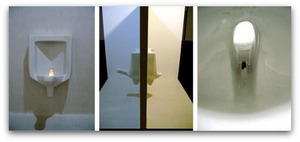 I love Schweder's salute to Lawrence Weiner, Painting Instruction: Chair Exchange, 2009, Acrylic on canvas, Edition of 10. Each says, "Make your neighbor's painting pinker."
I love Schweder's salute to Lawrence Weiner, Painting Instruction: Chair Exchange, 2009, Acrylic on canvas, Edition of 10. Each says, "Make your neighbor's painting pinker."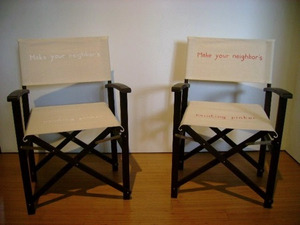 The dream of a room somewhere includes one enormous chair. Ms. Doolittle assumed the chair would hold its own under her weight, but Schewder's version (a sofa, really) rides and fall with the movements of its occupants.
The dream of a room somewhere includes one enormous chair. Ms. Doolittle assumed the chair would hold its own under her weight, but Schewder's version (a sofa, really) rides and fall with the movements of its occupants.  .
.Through May 2. My review of Schweder's A Sac of Rooms Three Times A Day here. Jen Graves here. Graves on Schweder receiving The Stranger's 2007 Genius Award for visual art here.
Look at me!Dr. Seuss, Cat in the Hat
Look at me!
Look at me NOW!
It's fun to have fun
But you have to know how!
Taxali at Jonathan LeVine Gallery till May 2.
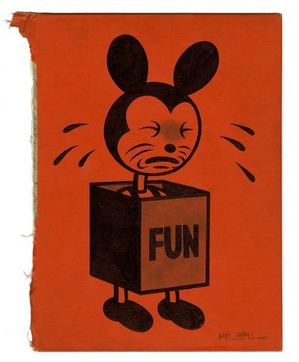
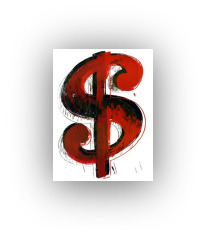 Following the worldwide crash, the heart has gone out of art about big money.
Following the worldwide crash, the heart has gone out of art about big money.Once seen as the equivalent of a medical examiner performing an autopsy, For the Love of God has taken its rightful place as the corpse. With $20 million in rock candy glittering on its $100 million skull, it is more symptom than diagnosis. As such, the piece is a more powerful, less didactic work of art. A year ago, some dismissed it as a frivolous joke. Anybody laughing now? Certainly not the artist, whose chances of recouping his investment continue to dwindle.
Chris Burden's One Ton One Kilo (100 kilos of gold) slipped between cup and lip. As he learned to his sorrow, his middleman being a Ponzi schemer, toying with the root of all evil has big bite-back potential.
Art about more common currencies continues to thrive. Too bad Cornelia Parker's 30 Pieces of Silver isn't on view. (Detail below) This is her moment - the betrayal inherent in consumerism finds its perfect expression in this piece. Her flattened objects may appear, like us, to be heading for the slag heap. Unlike us, however, they retain their allure.
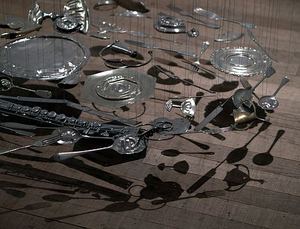 Nothing is more common than a penny. "The lowly penny," said Jack Daws. "People don't bend over to pick it up."
Nothing is more common than a penny. "The lowly penny," said Jack Daws. "People don't bend over to pick it up."They would if they realized he'd made it. Daws fabricated 10 18-karat gold pennies and used one in a coffee shop at the Los Angeles airport. Each cost roughly $100 to make; Daws' gallery, Greg Kucera, is selling the remainder for $1,000 each. The
Other artists blurring the boundary between art and money include Gary Hill and
You can pull all the stops outStephen Sondheim, Gypsy
Till they call the cops out
Grind your behind till you're bent.
But you gotta get a gimmick
If you wanna get a hand.
You can sacrifice your sacharo
Working in the back row.
Bump in a dump till you're dead.
Kid you gotta have a gimmick
If you wanna get ahead.
Visit msnbc.com for Breaking News, World News, and News about the Economy
Air Supply, 1-5, 2004 Images via Western Bridge from James Harris Gallery. (Click first four to enlarge)




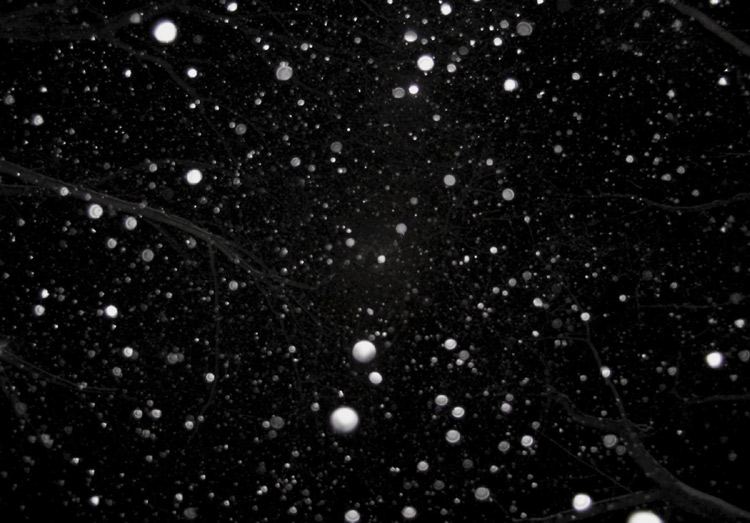
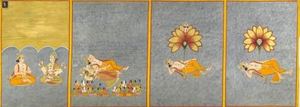 Garden and Cosmos: The Royal paintings of Jodhpur closes on Sunday at the Seattle Asian Art Museum. More information than you want to read here.
Garden and Cosmos: The Royal paintings of Jodhpur closes on Sunday at the Seattle Asian Art Museum. More information than you want to read here.I know a lot of Vancouver artists- and, some of them are just like Jen describes, while others are just as provincial as she accuses Seattle artists of being. And in Vancouver, the shadow of a certain style of text and photo based, detached and cold conceptual work, somewhat Baldessari-esqe, hangs over a lot of the artists. There has been a big concern lately, as Emily Carr has been closing all the "crafty" art departments, and going more and more towards a Photoshop-only curriculum, that nothing but one style of art is "approved" in Vancouver. And, strangely enough, THE EXACT SAME THING has been happening at the (University of Washington).
Ries: The text/photo crowd, most of whom are not "cold and detached" although there's nothing wrong with an ambitious chill, is in the ascendancy everywhere. The extra reason why at the University of Washington comes down to faculty: photographer Paul Berger and photo-technician/curator Michael Horn (neither of whom has a Web site), along with Rebecca Cummins and Ellen Garvens. Add the recently demised Larry Sommers, and you've got the Pied Pipers of the art department.
A good crew graduates from the UW this year with BFAs in photography, video and whatever trails those categories as installations.(Exhibit at the Jacob Lawrence Gallery, through May 2. Tuesdays-Saturdays, noon-4)
From Sol Hashemi, Special Event is a collage of the world's corny surfaces, what takes up space around us, our sometimes inadvertent lightening and brightening touches. At the last minute, Hashemi added to the show a forlorn construct he'd made on his way in, titled, Untitled (Mardi Gras Mylar Spray Pick #2). He was doubtless thrilled to see it booted out soon after and placed near a trash can, not in the trash can, which I presume would have been better.
(Click images to enlarge.)
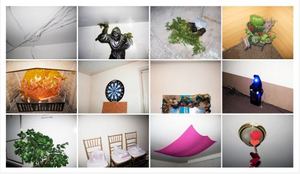 In the spirit of Robert Rauschenberg, rejoice.
In the spirit of Robert Rauschenberg, rejoice.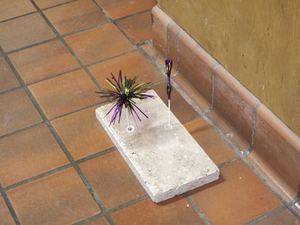
Of all the critics out there, I think I might like Cotter the most, not only for his knowledge and insight (lots of critics have that) but for the heart and soul he quietly brings to each piece.More from me on Cotter more here, here, here and here.
Back in Seattle after stints at several newspapers in the Southwest, Frank contributed My God, the Cat! to A News Cafe, his first online only venture.
(Image, Julia Salamonik. Click to enlarge)
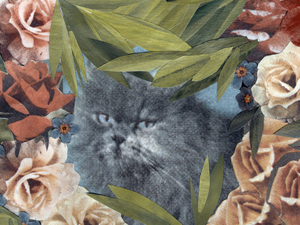
The problem with religion so far is that humans have chosen such unreasonable gods to worship. Why haven't we been smart enough to have gods who are easy to please, who make demands we can meet without excessive sacrifice?
It's a problem that vexed me for years - but I've solved it.
Although I always liked my cat, it wasn't until I decided to embrace theofelinity that our relationship deepened into something refreshingly spiritual.
A cat is a wonderful god. I'm not talking about the big cats like lions or tigers or the fearsome part-feline beasts worshipped by certain ancient civilizations. No, the perfect god is a house cat, a god not likely to eat you alive for some minor infraction of its rules, a god grudgingly dependent upon you for its survival, a god, in short, very much like my cat.
Scratch (that's his name) requires only food on a regular basis, a place to sleep that's warm and dry, and petting sufficient to energize his purr.
Prayer to a cat is entirely optional. Despite the most fervent pleading for divine favor, a cat will not intercede on your behalf. It would be a waste of time to ask a cat to improve the weather, increase the harvest, rescue you from financial difficulty, or smite your enemies.
And there is little to dread in the way of punishment for transgressions, although Scratch did once afflict me with the pestilence of ringworm. (Continued here)
Subjects were taken from the various discarded magazines floating around the museum. The challenge amounted to a small photo being pasted in a standard sheet of paper, and 6 empty boxes placed below it...The results ranged from realistic renderings to insightful caricatures, silly pictures to conceptual musings, and everything in between. (Besides guards), participants over the years have ranged from artists Mark Ryden, Jennifer Zwick and Cait Willis to folks with no artistic training what-so-ever...This year's highlight will be highlight an interactive section of 100 new, blank portrait challenges which the public will be asked to fill up with the night of the show.Baby Seal Club, 619 Western Ave., third floor. May 7, 6-10 pm. Sample from the past below.
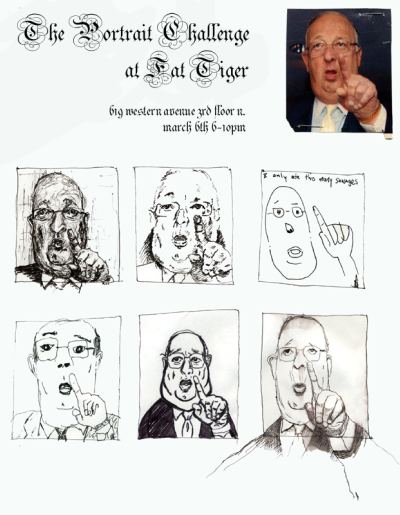
 Jil Weinstock,
Green Frame Tableau,
pigmented cast rubber,
50" x 90" x 2" 2008
Jil Weinstock,
Green Frame Tableau,
pigmented cast rubber,
50" x 90" x 2" 2008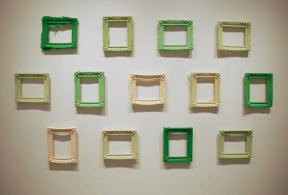
Since both have solo shows at the Henry (his upstairs, hers down), a little compare and contrast is inevitable, but each deserves to be seen in his/her own light.
Henry, take a bow. These shows make sense in relation to each other. The idea behind their presentation is clear - a survey from mountain top to mountain top. The third ingredient of good programming - an acknowledgment of where the Henry itself is located in the world - is missing, however. What are the NW video affinities?
At the very least, a small Gary Hill show would have been a fine thing. Seattle's Hill stands between Kentridge and Lislegaard, leaning toward her. More accurately, she leans toward him. She matches his cool clear-sightedness, his intellectual rigor. Unlike hers, his work (like Kentridge's) is rooted in body awareness and the tragedy of its struggles on the road to death.
Lislegaard shares Hill's interest in language as a manifestation of sculptural presence, but the meaning he derives is visceral, while hers is as remote as the North Star.
(Gary Hill, still photo from Wall Piece, video. His insights along with a portion of the video here.)
Click images to enlarge.
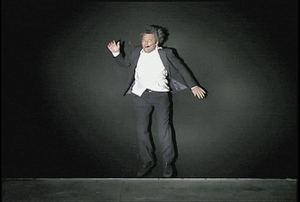 At the Henry, organized by senior curator Elizabeth Brown, are a trio of Lislegaard's digital-animation installations inspired by science fiction. In her antiseptic world, life mutates without birth pangs from solids to liquids, spare interiors to false-front forests and texts that clarify before they blur and run.
At the Henry, organized by senior curator Elizabeth Brown, are a trio of Lislegaard's digital-animation installations inspired by science fiction. In her antiseptic world, life mutates without birth pangs from solids to liquids, spare interiors to false-front forests and texts that clarify before they blur and run.(Lislegaard, from Crystal World (after J.G. Ballard)
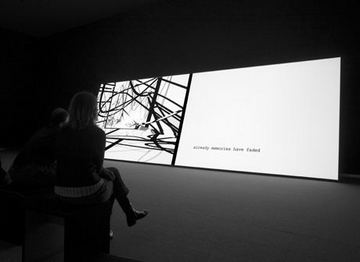 The chill from her work is real, and so is its power. Black cut against white softens to gray and turns into water. Her view of physics argues against the idea of personal volition.
The chill from her work is real, and so is its power. Black cut against white softens to gray and turns into water. Her view of physics argues against the idea of personal volition. Lislegaard, Bellona (after Samuel R. Delany)
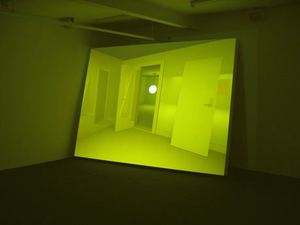 It's a theory of everything that leaves everything out. In her
gravitational flow, we are dead stars visible on time borrowed from the
past. She's interested in the world without the world, what impressions it leaves on the flexible coils of matter.
It's a theory of everything that leaves everything out. In her
gravitational flow, we are dead stars visible on time borrowed from the
past. She's interested in the world without the world, what impressions it leaves on the flexible coils of matter.Note: I was thrilled to see two small exhibits honoring NW artists who died this year, Richard C. Elliott (my obit here) and Doris Totten Chase (my obit here). From no other art museum is there any indication that they lived and died here, and both mattered greatly. Bloom where you're planted, people. You are not curating on Mars. (Thank you, Henry Gallery associate curator Sara Krajewski.)
Plato waited a long time for an artist who could scratch on his wall and give his metaphor visual life. (Click images to enlarge.)
Behold! human beings living in an underground cave, which has a mouth open towards the light and reaching all along the cave; here they have been from their childhood, and have their legs and necks chained so that they cannot move, and can only see before them, being prevented by the chains from turning round their heads. Above and behind them a fire is blazing at a distance, and between the fire and the prisoners there is a raised way; and you will see, if you look, a low wall built along the way, like the screen which marionette players have in front of them, over which they show the puppets. - Plato, Book Seven of the Republic, from Allegory of the Cave.
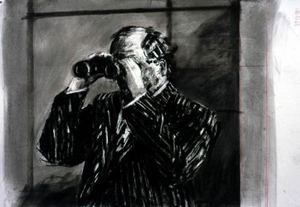 Kentridge isn't interested in following Plato to the end of the line, aspiring to the idea of Divine Form. Leaving that hopeless ideal to minimalists, he stays in the cave with writers like Henry Miller, who wrote that "chaos is the score on which reality is written."
Kentridge isn't interested in following Plato to the end of the line, aspiring to the idea of Divine Form. Leaving that hopeless ideal to minimalists, he stays in the cave with writers like Henry Miller, who wrote that "chaos is the score on which reality is written." In the chaos of the cave, Kentridge picks up what could be a stick blackened in a fire and draws in a coarse hand. His films are one-step up from flip books. In his deft, rude style, the hard gravel of who we are finds its advocate.
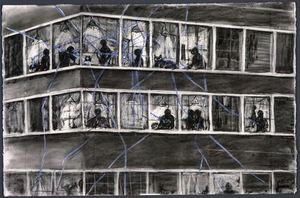 Kentridge continues at the Henry Gallery through May 3, with three videos, suites of drawings and tar-like sculptures.
Kentridge continues at the Henry Gallery through May 3, with three videos, suites of drawings and tar-like sculptures.What if you opened your cupboard one morning, and among the usual cereal boxes, a tiny slum had developed?Right to the point with an arresting image. I have no idea who Shimp is, but she joins a team of good writers covering visual art for the Seattle Times after the ST dispensed with its staff position. I wrote about this interesting twist of fate in an earlier post titled, "Eliminate the art critic. Result? More and better art criticism." Shimp could be the best of a promising group.
David Bonetti, writing on staff for the Post Dispatch, is seasoned and smart. There's more to his review of Claudia Schmacke's installations than Shimp's review of Syjuco, but his lead baffles, because it's not true.
Having grown up in Germany, Claudia Schmacke can't be expected to know the Dylan Thomas poem "The Force That Through the Green Fuse Drives the Flower."Thomas was Welsh. Why would one European be less likely than an American to be familiar with the work of another European? Because Thomas wrote in English? Most of the Germans I know speak it well. Whenever I'm there, the fluent include taxi drivers, hotel clerks, waitresses and museum ticket takers. His lead was a moment of asleep-at-the-wheel. Late blooming reviews are unread reviews. Blow the first sentence, and the wandering eye moves on.
Whether you go to art school or not, you will only learn by doing the work yourself and being guided by someone. "Self taught" artists can't operate in a critical vacuum. And if you don't go to art school, and you go to museums and galleries and turn to books and magazines for instruction and insight, you will have to ask what their academic connections are. "Self taught" is just a marketing device, as is "outsider".Steve. Of course there are self-taught and homemade artists, artists who never set foot inside an art museum or read an art magazine. Some didn't go any kind of school, never mind art school, and they created all by themselves, without a community of like-minded others.
As an old man, (1) Bill Traylor started drawing on pieces of cardboard while he sat on the street. Born deaf and mute, (2) James Castle drew in spit and dirt in Idaho, using whatever paper or cardboard he could find. (3) James Hampton was a solitary janitor. After his death, his landlord happened upon his masterpiece.
Who taught them? A lot of artists in this vein say God did. I think art might be genetic to our species. There are more things in heaven and earth, Horatio, than are dreamt of in your philosophy.


 (Click images to enlarge.)
(Click images to enlarge.)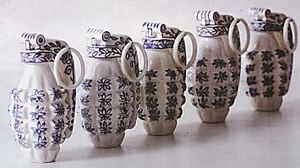 Back in the world where guns fire and grenades turn their targets into pink mists of pulp, small gestures count and may be useful. (YaChin You)
Back in the world where guns fire and grenades turn their targets into pink mists of pulp, small gestures count and may be useful. (YaChin You)
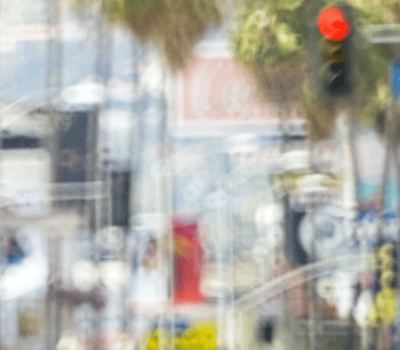
The best thing about these new sculptures standing next to the east wall of the Paramount Theater is they are fenced in. When the chain-link fence is removed, and there's nothing between us and them, everything that makes them bad (bad idea, bad imagination, bad motives) will oppress us like the heated talk of a man, a poet, who is excited by the sun of his own inspiration.
I love this paragraph from Charles Mudede, who is the poet of whom he speaks, excited by the sun of his own inspiration. Note he doesn't mention the artist, Ries Niemi, or the name, rank and serial number of the piece, Eat, Drink, and Be Merry.
Neimi responded by signing, under his name, bad idea, bad imagination, bad motives. Jen Graves added in a later post, "I'm sorry, Ries. But I really can't countenance those things."
She noted that the sculptures have been removed to "make way for the next phrase of light rail construction." She didn't say the sculptures were commissioned by Sound Transit START Public Art Program, which means they'll be back.


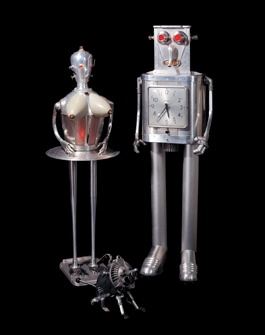
According to the Niemi, his piece consists of...
3 totem poles for the 21'st Century, collaged from images of contemporary culture, food and drink. Ranging in height from 16 to 18 feet, and 8 feet in diameter, these glittering stainless steel figures are anthrophomorpic but not human. They are made from different textures of forged and fabricated stainless steel. The site is a small urban park whose reason for existance is the Vent Shaft for the Sound Transit tunnel under Capitol Hill.In other words, the piece was created to accompany a park that isn't there yet. Placing it in a bleak section of urban wasteland was intended to perk up the wasteland. Instead, all the ire the place attracts found a focal point. And that's what Lawrence Alloway, writing brilliantly in the 1970s about public art, thought it should be, a "focal point for an undeferentiated audience."
At this point, Niemi took a bullet for a hideous stretch of city property. Will the reputation of this piece rise against a better backdrop? If there's any justice, yes.
Greg Sandow, on the other hand, found it more than a little suffocating, here. But everybody seems to agree it set a good precedent. What precedent? YouTube chose to play in a concert hall, instead of organizing an event that made sense only online, where it lives.
Playing for Change has already done just that. It collected a great team of musicians from all over the world and linked them through headsets to each other's contributions. No artist left his or her village, city square or mountain top, and yet everybody was in sync.
Divided by geography, they're united by the rich tapestry of music they're hearing as they make it. Had you passed by one of them, you would have seen a solo act. Only online is the global magnificence of the project apparent.
I posted it on ArtsJournal's main page earlier in the week, but if you missed it there, here it is, a major smack down to those who think life online isolates its audiences. Here's to the new world, more fun than the old.
Since the 1960s, MFA degrees have become the first legitimator in an artist's career followed by awards and residencies, representation by a primary dealer, reviews and features in art magazines, inclusion in prestigious private collections, museum validation in the form of solo or group shows, international exposure at well-attended biennials, and the appreciation signaled by strong resale interest at auction. More specifically, MFA degrees from name art schools have become passports of sorts.Leslie Dick, the only writer with a full-time position in the art department at CalArts, told Thornton he asks students the following question:
Dave Hickey told her that he doubts the value of that process.
Why come to grad school? It's about paying a lot of money so you can change. Whatever you thought was certain about how to make art is dismantled. You wobble. You don't make any sense at all. That's why you are here.
I'm with Hickey on this one. Doesn't Dick sound a bit like a cult leader? If you're not sick, don't call the cult leader. Paying a lot of money to study a collective version of the meaning of meaning might make sense in flush times, for those inclined. But for those who don't have family money and are going into debt for the privilege, I think its virtues are overrated.
My one rule is that I do not do group crits. They are social occasions that reinforce the norm. They impose a standardized discourse. They privilege unfinished, incompetent art... If you're not sick, don't call the doctor... I don't care about an artist's intentions. I care if the work looks like it might have some consequences.
I've been thinking about this since Todd Simeone opened at the James Harris Gallery. Simeone was showing in Seattle before he got a BFA from the University of Washington in photography in 2005. By the time he left town to get an MFA from the University of Illinois at Chicago, he was on the regional charts with a bullet, ready to hold his own in a larger context.
He believes that graduate school helped him focus, and that may be true. What's also true is that it appears to have (temporarily) killed his spark, his juice, the thing that made him singular - a commitment to imagery that makes an electric connection between audience and art, allowing them to rearrange and enlarge their understanding of the world of things.
I also think, for someone like Simeone, interested in a progressive version of the landscape, there's a lot more going on in that vein in Seattle than Chicago, where he is now and his Seattle dealer advised him to stay.
Wynne Greenwood can sing. The almost complete suppression of her singing is part of her performance at On the Boards, titled, Sister Taking A Nap.
The
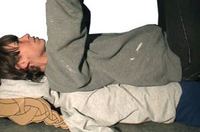 Our heroine might go for a run but can't find a pen to leave a note. ("Where are your pens? ... Seriously.") For a poet-sister not to have pens around is telling. Back to the heroine, who's hungry. She says so several times. To no avail, she tries to wake her sleeping, former-poet sibling, who is a half-drawn, half-stuffed puppet prone on the floor.
Our heroine might go for a run but can't find a pen to leave a note. ("Where are your pens? ... Seriously.") For a poet-sister not to have pens around is telling. Back to the heroine, who's hungry. She says so several times. To no avail, she tries to wake her sleeping, former-poet sibling, who is a half-drawn, half-stuffed puppet prone on the floor.Gina Young plays the role of Greenwood's shadow. Since Greenwood is already her own shadow, Young pulls off a monumental act of self-suppression. She's there, and she's not. She holds a light, paints a plaster bird black (no need to say nevermore), chips away at Greenwood's pink plaster suitcase, which, having no opening, doesn't.
Greenwood's lithe young thing is monumentally self-absorbed. She might as well be a potted plant, because she expects watering. This kind of person does not age well. As presented in Sister Taking A Nap, she's a drain on everybody except the members of the audience, who respond to Greenwood's dry wit, perfect timing and sculptural use of language.
Greenwood got her start in the music scene in Olympia in the late 1990s, which is where she launched Tracy + the Plastics. The group featured her and her sisters. If she has any sisters, they weren't in the band.
A Russian joke comes to mind: Two Russians meet on the street, and one asks the other:
Is it true that you formed a musical group?
Yes, a quartet.
How many members?
Three.
Who?
Me and my brother.
You have a brother?
No.
Tracy + the Plastics was Greenwood times three. When on stage, she fronted multiple video screens featuring her alter egos. Sometimes there was a video dog. Sometimes there were sculptures that turned into drums or hatched, like eggs, to offer tea with milk and honey.
There are legions of visual artists who'd like to be musicians and musicians who boast about their art chops, but few are equally good at both. Greenwood is the rare, real deal. She fused video and music with performance stand-up: low-tech/high-concept, kick-butt, punk-tinged, art-based rock 'n roll.
Right now she really is alone, even though she's working with Young. Keeping hope alive, she says she's going to release another record. I can't wait.
Bad At Sports on Sister Taking A Nap, here. By noon on Thursday, there will be audience reviews of the show, courtesy of Blog the Boards.
For Michael Buitron and Manya Fox, a similar strategy became a critique. Instead of disguising a problem, they highlighted it. Buitron added plastic leaves to bare branches in his project, Four Los Angeles Parks. Fox flung a deep green tarp over a dead spot.
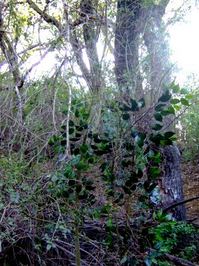
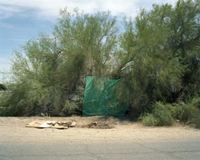
Then there's SuttonBeresCuller, replacing nature with a madcap, Bladerunner zeal. Below, images from their portable park, fake island in the real Lake Washington and their green cave of a mini-mart, the last still in progress.

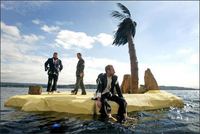

John Sutton, Ben Beres and Zac Culler are represented in Seattle by Lawrimore Project.
(Click images to enlarge)
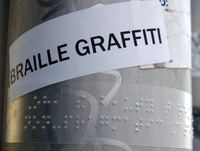

Two years earlier in Seattle, Spike Mafford made an attempt to connect with the blind in a photo exhibit at Francine Seders Gallery.
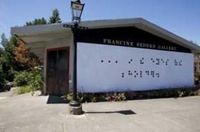
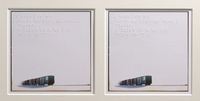
Twenty-five years before that, Buster Simpson mounted a series of Cherry tree branches along Pine Street, from the Pike Place Market to First Avenue. Along the underside were messages in Braille. It was part of Simpson's failed campaign to save a Cherry tree from developers' plans to remove it. After he lost, he used parts of the tree for a range of art projects, none of which are online. Late Simpson does not appear to value early Simpson. His Web site tracks only projects from 1989 onward.
Shin, who refashioned thousands of trophies, did not need to look far and wide for material. Trophies are everywhere.The cheap charm of pats on the back disguises the ruthless sorting of unregulated Capitalism.
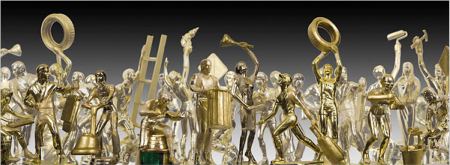 Do-Ho Suh turned a mass of humanity into a trophy for an overlord.
Do-Ho Suh turned a mass of humanity into a trophy for an overlord.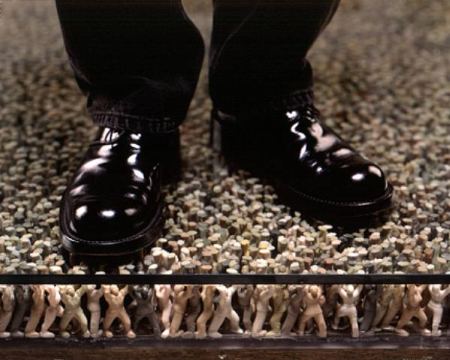 Christian French turned his into a storefront shrine - buy your Buddhism here.
Christian French turned his into a storefront shrine - buy your Buddhism here.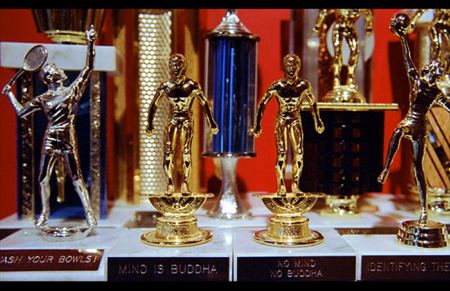
Sherry Markovitz recast a hunter's prize as an emblem of the spiritual realm.
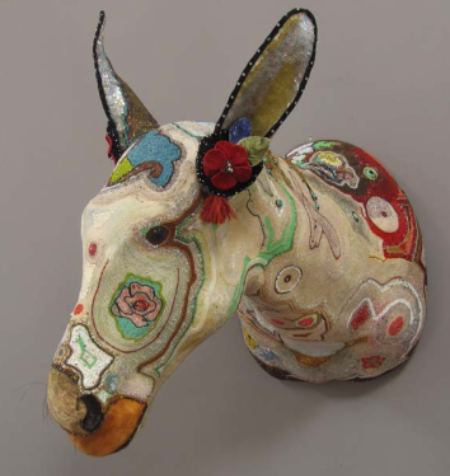
Nicola Vruwink made a trophy of herself. It's herself she can't get away from, with all the years of training in the art of feminine wiles. As Oscar Levant said years ago about Doris Day, "Nobody loves a fairy once she's 40."
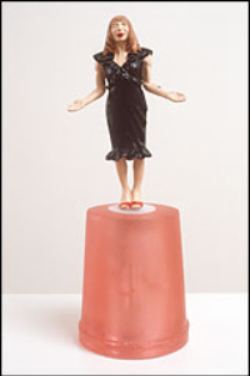
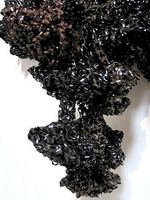
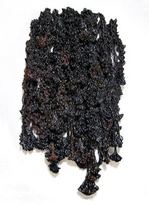
Vruwink opens Saturday night at fluxco. Images from d.e.n. contemporary.
How real is the complaint this time? Are we San Jose to Vancouver's San Francisco, or San Diego to Vancouver's LA?
If cities could slouch down runways (their tallest buildings serving as hats) or duke it out in boxing rings (their criminals ready with sucker punches), then declaring a winner makes sense. I'd rather think about how Portland, Seattle and Vancouver complement each other than crown one queen for a day.
Since the issue is on the table, however, there are a few things Graves left out.
Shari Mendelson's Venetians are a restorative. She makes them by collaging bits of plastic bottles together with a glue gun. Who wouldn't belly up to the bar for a drink in one of them?
(Click to enlarge)
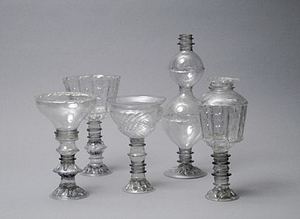
She's also expert in more ancient forms. Drop one and it will bounce.
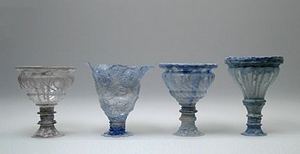 She's featured in Tikkunim: Jewish roots/Ecological Art at Howard House through May 2.
She's featured in Tikkunim: Jewish roots/Ecological Art at Howard House through May 2.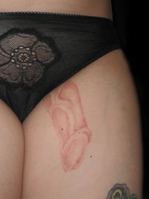
Lacking Nothing (Healing Wound) is the best retort to Freud's idea of penis envy. God bless the child who's got her own.
DeAugustine's piece resolves more than 20th-century problems, however.
In Plato's Symposium, he advanced the idea of three sexes - male, female and hermaphrodite. In a bad mood, God had split them in half, which means everybody wanders the earth looking for his/her other half: both same sex and opposites attract.
In the photo on the left, DeAugstine imagines a female nailing down her other and carrying its mark on her thigh. Like Sweeney Todd with a razor in his hand, she's compete.
Pipilotti Rist made her first big impression in 1997 with Ever is Over Again, in which a young woman strides down the street carrying a cudgel. The cudgel is a flower (men are beautiful) and a weapon (dangerous too.) As the girl in charge, she assumes both their beauty and their power.
There are other ways to have it all. Below, Alice Wheeler's GenderFuck Courtney and Tess at WTO Anniversary.
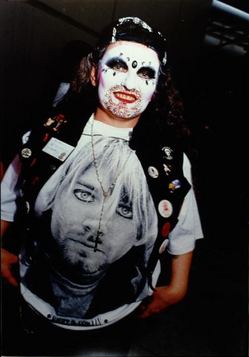
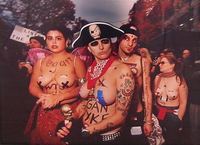
That story would be interesting, especially if they'd been made in China. But no. She's upset about the morality of chaos narratives. Take it up with Homer, Ms. Kennedy. As long as the human race has told stories, we've entertained each other by imagining the worst.
She's also miffed that the destruction is sometimes casual:
Only too often, the worst plays out like a blip in the screenplay.Did she fail to read Douglas Adams' Hitchhiker's Guide to the Galaxy? Before the story gets properly underway, a bully vaporizes the earth, almost by accident. Arthur Dent is on the road in space because he has nowhere else to go. It's a comedy.
Wake up, old media. The clock's ticking. Don't you want us to remember you fondly? I do not claim that my defunct piece of the old media pie - the Seattle Post-Intelligencer - wowed its audience on a daily basis. However, this story would have been laughed off the computer screen before it got there.
(Click to enlarge)
First row, left to right: Iain and Ingrid Baxter, Michael Brophy and anonymous (from ffffound).
Second row: Rick Lehl once, Dan Witz twice.
Third row: The fabulous Dan Witz three more times.
Fourth row: Christopher Martin Hoff, Margaretha Bootsma twice.
Fifth row: Mark Jenkins, Mark Wathieu (image no longer on flickr), Ann Duffy
Sixth row: Brad Downey, three times.
Seventh row: David Shrigley.





He could be Moses looking down from a mountain top at a party below. All he sees is the party he hates. He misses whatever else extends to the horizon line. Personally, I'm not looking for Old Testament from an art critic.
Italy is not like America. Art isn't reduced here to a litany of obscene auction prices or lamentations over the bursting bubble of shameless excess. It's a matter of daily life, linking home and history. Italians don't visit museums much, truth be told, because they already live in them and can't live without them. The art world might retrieve a useful lesson from the rubble.
At the same paper, Holland Cotter is (as usual), open, generous and perceptive, this time in a review of Younger than Jesus at the New Museum. Towards the end of his essay, however, he raised a question the New Museum would do well to ponder:
"Younger Than Jesus" ...is, despite its promise of freshness, business as usual. Its strengths are individual and episodic, with too much work, particularly photography, making too little impact. But my point is that beyond quibbles about choices of individual works, (the show) raises the question of whether any mainstream museum show designed to be a running update exclusively on the work of young artists can rise above being a preapproved market survey. Removed from a larger generational context, can such a survey ever become a story, part of a larger history? (The same question applies to museum exhibitions that leave young artists out of the picture.) I'm asking. It's a complicated subject. I don't know the answer.Cotter's last graph is perfect closer for an review on the latest in dewy fresh faces:
A small commercial gallery called BLT, on the Bowery across from the New Museum, has announced that its May exhibition will consist exclusively of artists born before 1927. Louise Bourgeois, Lucian Freud and Ellsworth Kelly will be among the participants. The show will be called "Wiser Than God."
Holler began documenting the house in 2001. It's all gone now, and these photos are the only evidence of how it looked in the 23 years between her grandparents' deaths. Holler's description of the project here, on her Web site.
(Click images to enlarge.)



Erika Langley:
Annie and Vera Piccola, my great-aunts, always lived in the same house next to the railroad tracks in Chicora, Pennsylvania, a place nicknamed "Goosetown" for the bleat of the oil wells. Neither ever married or left, and the house remained perfectly intact. The train would pass the house daily, at noon and at seven, marking the sameness of another day, the sureness of time. When they were in their eighties I began to document their vanishing world.



A lion appreciates with pleasure an Easter gift in Buenos Aires Zoo, Argentina, April 9, 2009. (Xinhua Photo)

I see an old fellow contemplating his reduced circumstances; China View sees a celebration of the Easter bunny.
I grow old . . .I grow old . . .T.S. Eliot, The Love Song of J. Alfred Prufrock
I shall wear the bottoms of my trousers rolled.
Shall I part my hair behind? Do I dare to eat a peach?
I shall wear white flannel trousers, and walk upon the beach.
I have heard the mermaids singing, each to each.
I do not think that they will sing to me.
If a lion could speak, we would not understand him.Ludwig Wittgenstein, here.
Critics claim to decode images. What they decode is themselves.
2. Subodh Gupta, The Silk Route, 2007. Photo via The Guardian
3. Zhan Wang, On Gold Mountain: Sculptures from the Sierra, 2008. Photo via San Francisco's Asian Art Museum.
(Click to enlarge)


It beats the heck out of the kind of silhouettes they put on school crossing signs.
Speaking of those silhouettes, here's Vanessa Renwick's altered version ( The Jesus Crosswalk) from her blog, The Oregon Department of Kick Ass.
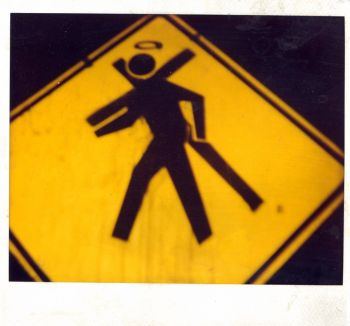 Say amen, somebody.
Say amen, somebody. There's also, from Playing for Change, the musical version.
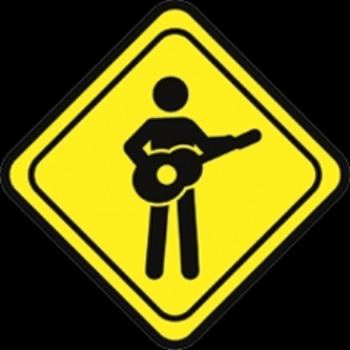
A group show on this theme would be nice. Here's a start on whom I'd put in it, besides, of course, Haven. Click images to enlarge.
(Left to right)
First row: Chauney Peck, Emily Pothast, Harold Hollingsworth and Jen Liu
Second row: Martin Puryear, Peter Millett, Eric Eley and Noah Grussgott




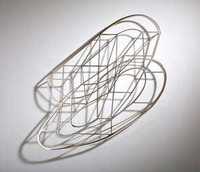 In her drawings, abstracted shapes dig into the paper, wrinkling the seam between positive and negative spaces, the wrinkles serving as shadows.
In her drawings, abstracted shapes dig into the paper, wrinkling the seam between positive and negative spaces, the wrinkles serving as shadows. 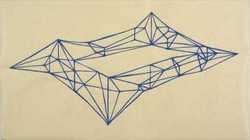 The ecstasy of geometry: Ellsworth Kelly meets Robert Irwin. Haven finds new music in the old bones of their ideas. In her current exhibit at Greg Kucera, a new wrinkle. Haven stretched rubber bands into patterns and photographed the results. The silky slide between form and space, between object and its shadow, blurs the boundaries she so carefully articulates and challenges.
The ecstasy of geometry: Ellsworth Kelly meets Robert Irwin. Haven finds new music in the old bones of their ideas. In her current exhibit at Greg Kucera, a new wrinkle. Haven stretched rubber bands into patterns and photographed the results. The silky slide between form and space, between object and its shadow, blurs the boundaries she so carefully articulates and challenges.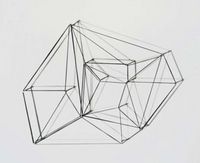
I'd love to see her work paired with Peter Millett's.
 Since they are both represented by the same gallery, it can't be the impossible dream.
Since they are both represented by the same gallery, it can't be the impossible dream. Jen Graves' reaction here. Emily Pothast here. I'm still thinking about it, but congratulations to Pauwels. Party at the Henry April 17.
Jen Graves' reaction here. Emily Pothast here. I'm still thinking about it, but congratulations to Pauwels. Party at the Henry April 17.I despise the Seattle Times, partly because of its right wing editorial page but largely because of its we-know-what's-good-for-you tone and its ability to take good writers (such as Farr) and turn their work into drivel.
As long as I've been in Seattle, the ST has been certain it represents the best of all newspaper worlds. In visual art, it had no reason to think so. I resented it as a missed opportunity. Why should the largest paper in the state so poorly serve the art interests of its community? Newspaper-to-newspaper competition would have been nice.
As the art critic at the now defunct version of the Seattle PI, I had none, save, for a brief period, from Robin Updike, who's smart and willing to look around.
A funny thing happened after the position was axed. The paper, now fighting for its life, has given visual art a prominence previously unimaginable in its pages. Credit must go to ST's A&E editor Lynn Jacobson, who turned Gayle Clemans and Michael Upchurch loose to cover the field.
Both are alert, awake, aware and willing to tackle art that requires work to produce even a semi-adequate response. Their reviews are not placeholders. They are evidence of engagement.
Because of them, my anti-ST rancor is toning itself down. If they keep it up and publisher Frank Blethen steps aside ( assuming he is not replaced by an equally weird family member), I might eventually let bygones be bygones and subscribe.
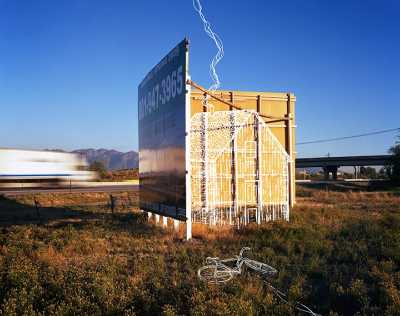
Checkmate.
Art is full of bitchy moments, but rarely do they become historical. Hats off to the man whose disdain made him a beloved and influential figure to this day.
He's the art world's Bartley the Scrivener. Just like Bartley, who'd prefer not to, Duchamp indicted the system in which he refused to participate. His reason was solid, and it was about reason: If art were no more than the metronomic production of visual niceties, it was nothing at all.
More than 60 years later, Vik Muniz followed Duchamp's lead with an unintended, boomerang effect. In obscuring the work of others, Muniz is the one whose product is a thoughtless pleasantry, a parlor trick.
Three examples from his Pictures of Pigment series were recently at the James Harris Gallery. He piled up layers of colored pigment and photographed the results for a final product, attaching his dead weight to the memory of other artists.
Thanks to him, Gustave Courbet, Frederic E. Church and Grandma Moses all come out the same. What's really the same is him, not them.
(Click to enlarge)
1. The Oak at Flagey, after Gustave Courbet, 2007
2. Evening in the Woods, after Grandma Moses, 2006
3. The Icebergs, after Frederic E. Church, 2007



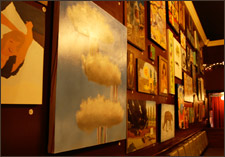 Rough, tough times continue for artists and everybody who relies on them (dealers, critics, museums, art centers). In Seattle, however, there's the comfort of knowing that our local art bar is not just a hide out but an engaging correspondent.
Rough, tough times continue for artists and everybody who relies on them (dealers, critics, museums, art centers). In Seattle, however, there's the comfort of knowing that our local art bar is not just a hide out but an engaging correspondent. Last week's letter to customers - Does your bar write you letters? - here. This week's is equally robust:
On Tuesday our ice machine stopped working. One day everything is fine, the next it is broken. Just like that. It was only four years old and had worked like a dream - not a hitch.
Every time we lifted the flap, it was to the brim with sparkling, clear ice - hundreds of pounds - it was like opening a treasure chest. If you ever felt down, you could just lift up the lid and smile at all the dazzle, the technology, the purity of it all. Have you seen 400 pounds of ice cubes, all at once?Tuesday it all came to an end. The fan stopped spinning. Drips of cold water leaked from the throat of this marvel. We gathered around, pointed flashlights, plugged and unplugged, unscrewed panels and poked around. When things are working great you just don't ask questions, it's only when they break that you investigate.Justin noticed the intake screen on the back. He saw a thick fur of dust with bellybutton lint and eyelashes that stuck to the screen like a sweater. We had killed it. All it ever asked was for someone to clean the screen and let it breath. We killed it out of our own neglect.There is a price to pay for killing. When you kill a machine the price is clearly written on a handwritten invoice with parts that you've never heard of and labor rates that rival a doctor's. It was a bitter pill.We encourage you to look at the things that are working so perfectly around you and pay closer attention. Get your oil changed. Fix that funky extension cord. There are batteries to replace, filters to change, chimneys to sweep and letters to write. There is nothing worse than realizing something died because of simple neglect. We are just lucky that it was an ice machine.
Fondly, The Hideout
While we were still working at the same paper, I could never figure out a way to score his editorial attention, but I've seen the dried pig's ears he transformed into a living animal. He's good at the nitpick, but he's great at tone, rhythm, word choice, fairness, flow and logic.
Till that happy day when he is in my employ, I count on the audience for after-the-fact editing and pay it in gratitude. This is a shout out to my most loyal online editors: Tyler Green, Betsey Brock, Eric Fredericksen, Doug McLennan and Tim Appelo.
John: When your sick of nit-picking at it.
Puppet Industries: When the cops catch ya.;)Nick: You never do, that's why it's a piece of art.
James: When your mum calls you down for dinner. (Note from Wooster: Our favorite!)
Frank: When the check clears.
Josh: When it starts to piss me off.
Logan: When I ruin it.
Dan: When somebody loves it.
Angel: When you are scared about putting something else in it.
Victoria: 10 years later.
I especially like, "You never do, that's why it's a piece of art."
It's a fun list, but artists already know those answers. More useful is Edward Winkleman's advice on how to secure gallery representation. Everybody says to approach only those galleries that show work on the same wavelength as your own. Winkleman adds the important footnote: You can't play me-too to an artist already represented there, nor can your work appear to undermine the program.
Is what you do too close to what someone already in the program is doing and/or does what you do conceptually or aesthetically conflict with what someone else in the program is already doing. For (a lame, but simple) example, if an artist in the program is arguing that identity art is dead and you make identity art, the odds are not good the gallery will want to undercut all the work they've done to build a market for that other artist by exhibiting your work.
This is good info to tuck away and use later. Trying to get a gallery right now is like taking a long walk off a short pier. The only reasonable move for the vast majority of the unrepresented is DIY, such as, in Seattle, Crawl Space, Punch Gallery and Soil Art Collective. Get a group of like-minded artists together, open a space and declare yourself something.
Nobody tackles the business end of art galleries with the insider depth and generosity of Mr. Winkleman. Here's a topic I'd like him to address: What do artists do when their galleries don't pay them? What recourse is there for artists who agreed to a 50/50 split and instead see a zero return, because the gallery (in trouble), is spending their money?
(Click images to enlarge)
First row: Susan Zoccola, Paul Marioni, Robbie Miller
Second row: William Morris, Akio Takamori, Marita Dingus
Third row: Jesse Edwards, Preston Singletary, Dale Chihuly
Fourth row: Jeffry Mitchell, Charles Krafft , Joey Kirkpatrick & Flora C. Mace



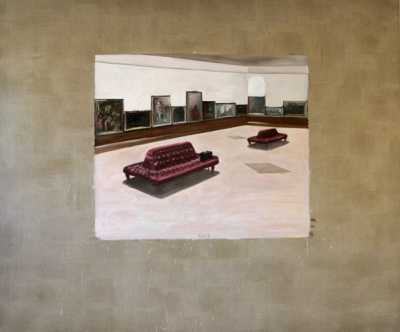
Since September 2007, Islands of LA has been exploring ... traffic islands as public space.
It's an absurd narrative in the guise of a social work.
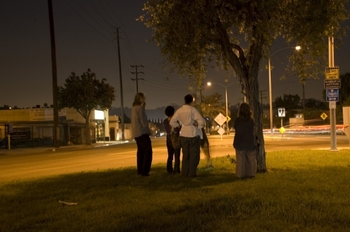
Ari Kletzky, in search of edible plants
CalArts provides links aglore. All other university museums: go forth and do likewise. I hope we will see each artist offered the opportunity to show images online in the Henry's MFA exhibit.
Besides Kletzky, artists looking good on the CalArt site include Arnoldo Vargas, Dan Finsel, Diana De Augustine and Nicolas Grenier.
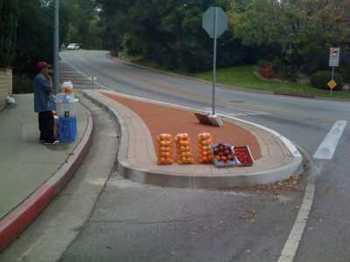
Ari Kletzky, island dweller - 2 months to pay off coyotes and then continue alone
Pushing up daisies. Kick the bucket. Take the fall. Turn a blind eye. Hitch my wagon to your star. All over him like a cheap suit. Stuffed in a phone booth.
(Image left, Helen Levitt, click to enlarge.)
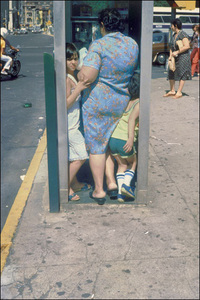
What makes a cliche? Just use by the many? If everybody sang, "Will you still need me, will you still feed me" at once, would it be finished? Why doesn't the same principle apply to prayers?
For Martin Amis (who wrote a book on the subject), cliches are empty husks. In a Charlie Rose interview on YouTube, Amis objected to "moldering novelties" such as...
seen it, done it; got the T-shirt; he went ballistic; I don't think so, and HELLO. These are dead words. These are herd words.I don't agree with Amis about cliches in language (depends on how they're used, not what they are), but his reasoning is unarguably wrong in art. Art recycles the comatose into the lively. The visual equivalent of herd speak is interesting precisely because it's herd speak.
(Joseph Mills right, click to enlarge.)
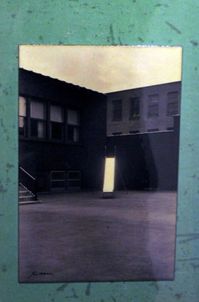
What could be more ordinary than a slide?
As far as Amis' dread HELLO goes, Jeffry Mitchell is the answer. (Click image to enlarge. Via Port.)
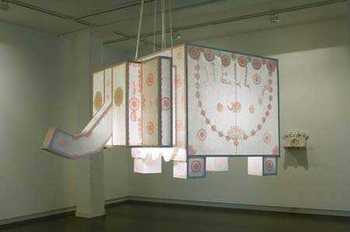
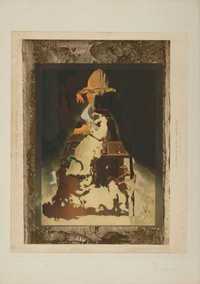 I owe the intro to Ambach & Rice, currently featuring an exhibit of Mills' collaged and silkscreened unique book pages, titled Anarch. Unlike the photos, which are in Kafka's famous phrase, "an ax for the frozen sea within us," the prints (click to enlarge example) have a density that resists connection.
I owe the intro to Ambach & Rice, currently featuring an exhibit of Mills' collaged and silkscreened unique book pages, titled Anarch. Unlike the photos, which are in Kafka's famous phrase, "an ax for the frozen sea within us," the prints (click to enlarge example) have a density that resists connection. Plus, they're small and require visual burrowing. It's easier to keep walking and yet, certain I was heading out the door, I kept doubling back to see them again.
In each, a burning monk and a frog laid on its back, as if on a high-school biology dissection table, open into a changing collage of art history's high points. Both frog and monk appear to be eating their way through the cannon, like moths in a closet full of matching skirts and sweater sets.
As quoted in the press release, Mills considers himself a latter day Surrealist:
Surrealism didn't resolve my concerns about meaning and meaninglessness, but it did address the infinite, mysterious and subconscious; that was really enough.
Also at A&M are the figurative, colored pencil drawings of Christian Weibrauch. If Mills is corrosively reductive, Weibrauch (click image to enlarge) is dreamily additive.
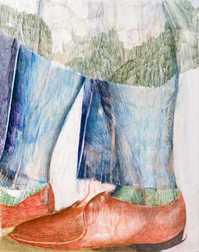 Down on their luck, our forests have hit the road as homeless people. Their ankles are thick from bad food, and their shoes have no laces. In other drawings, a figure is a world within a world containing worlds - in the artist's words, "moving on the edge of an osmosis."
Down on their luck, our forests have hit the road as homeless people. Their ankles are thick from bad food, and their shoes have no laces. In other drawings, a figure is a world within a world containing worlds - in the artist's words, "moving on the edge of an osmosis."Weibrauch is dangerously close to cute, close to illustrations in children's books. If that quality could be thought of as an edge, he doesn't fall off it. Instead of whimsical, there's a slow-motion, tidal pull inward. Art comes and goes, but by rooting fantasy in a tender, elegaic realism, these drawings have no real pull date.
Mills and Weibrauch continue through April 19.This is the first exhibit of Mills' silkscreens and Weibrauch's first exhibit in the U.S.
You were wrong in your assessment of Jen Graves' column about the new EMP director. Actually, Jen understated the case against this awful woman, and your excuses for her behavior are lame at best. In my opinion (Orr-Cahall) is the personification of evil ...Graves answers my critique & updates her story here and here.
You might recall that I was briefly caught up in this hysteria at COCA in 1989 with my Modern Primitives exhibition (tattoo and body modification.) I was able to prove to the NEA that Pat Robertson, Jesse Helms, et. al. were misinformed about the content of the show, which they based on viewing the book of the same title. I used discretion in selecting images for display, and no NEA funding was applied to the catalog.
So I escaped relatively unscathed. At the request of the NEA, I didn't make a big issue of it in order to avoid further inflaming the passions of the wing nuts. Years later, I submitted a Freedom of Information Act request for all correspondence related to Modern Primitives between the NEA, Helms, and others. Though heavily redacted, this file revealed an insane atmosphere and total capitulation on the part of NEA chair John Frohnmayer to the forces of evil.
He and Helms were identical to Hitler and Himmler. They even used the same vocabulary. I swear to gawd Helms referred to "degenerate art." Without a hint of irony. Leave it to EMP. I guess Heinrich Himmler was unavailable.
Reid added in a phone conversation that CoCA was audited by the
We're still dealing with the fallout from that time. Many misplaced their courage and haven't found it yet. A decade later, when the (Seattle Art Museum) caved to pressure and canceled Mike Kelley, you and I were the only ones who objected. Where was the outrage?Sample of objection here. Reid, quoted in my story, said,
Who needs Jesse Helms when we have the Seattle Art Museum? Did the museum make any effort to educate the public about this work? No. If the museum doesn't have the guts to stand behind a strong work of art when the squeeze is on, then it should go on pretending the 20th century never happened. Seattle's not ready for Mike Kelley? What are we, the wimp town of all time?
True, but I still think no one should play the Hitler card until there is murder on a massive scale. A rotten attitude toward art isn't enough. And even on the subject of art, Helms wanted to deny public funding for art he found offensive, not to destroy it and hound its makers out of the country or into death camps. To make these comparisons is disrespectful to those who dealt with the real Nazis. Reid as an arts center director tap dancing to keep his funding is not in the same realm.
To call Christina Orr-Cahall the personification of evil makes a cartoon of the category, but I realize that that Reid works in a comic book store.
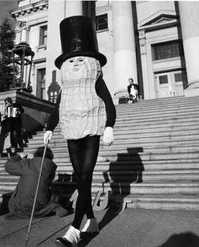
Since the inexorable logic of reality has created nothing but insoluble problems, it is now time for illusion to take over. And there can only be one illogical candidate: Mr. Peanut.
This could be a piece about journalists stretched too thin to cover their communities, but instead, it's a piece about Sommers' name in lights across Seattle's art blogosphere. Two of his former students have blogs and know how to use them.
Emily
One time Larry told me if he could live in any place at any time, he'd be a rich girl in the 19th century because they all had ponies. I tried to tell him that if having a pony was a big priority for him, he could probably make it happen in his present life. He didn't listen. He was too busy chanting "PONY PONY PONY!"Christina Olsen Burtner on Toys & Noise explains why he was the glue that held everything together.
But what if a Catholic voluptuary rejects the Cross? In Mitchell's words:
A feather, a skull, the moon and stars, a man (?) and half a lady, crystals and sequins and the grandchildren of Piero Manzoni and Allan Kaprow. There's something about magic, Hippie magic, and the way the LOVE CHILDREN freed them selves from the cross and sought spiritual expression through ancient forms other than the Christian one that resonates through this show for me. It's very much my story, and the story I look for. It's the story that I can't help but see and although I claim that each pair of works in this show found each other on their own, the instant I see these works I bring stories to each of them, helplessly, naturally.Mitchell curated Call and Response at Crawl Space with an eye out for inner magic, for spiritual passion expressed through the body.
Jack Ryan's moon ringed with cheap florescence (Image, detail) brings to mind William Carlos Williams' poem, The Attic Which Is Desire:
the unused tent
of
bare beams
beyond which
directly wait
the night
and day--
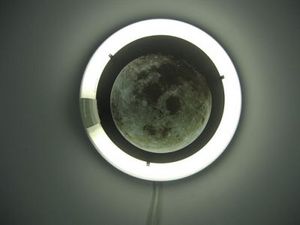
Here
from the street
by
* * *
* S *
* O *
* D *
* A *
* * *
ringed with
running lights
the darkened
pane
exactly
down the center
is
transfixed.
Some are too young to worry, but if they want to worry, I say let them.
Ryan Trecartin, from A Family Finds Entertainment.
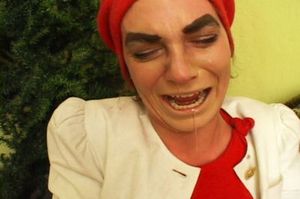
Others look at the love thing - drool as high romance. From Zack Bent and Debra Baxter, Getting the Love You Want (Practice).
Getting the Love Want (Practice) from Zack Bent on Vimeo.
Still others let paintings do the drooling for them. From Darren Waterston, Geist, 2004, oil on wood panel, 36 x 24 inches.
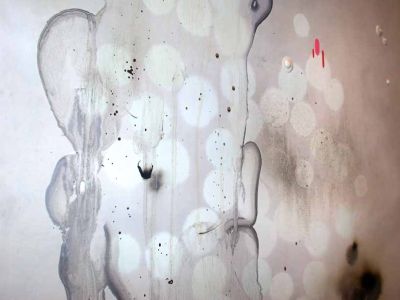
 I was reminded of my first stab at cooking by Bay Area painter Rooney
O'Neil, whom I've known since college. I married her brother, which is
why the top image in her photo of a part of her wall features her niece
and mine, Jade O'Neil, when Jade was about two, with a Bruce Davidson image from 1965 at the bottom. (Click to enlarge.)
I was reminded of my first stab at cooking by Bay Area painter Rooney
O'Neil, whom I've known since college. I married her brother, which is
why the top image in her photo of a part of her wall features her niece
and mine, Jade O'Neil, when Jade was about two, with a Bruce Davidson image from 1965 at the bottom. (Click to enlarge.)Jade's now 18. Time does run on.
Rooney O'Neil wrote in a recent email:
I first learned about nutrition from her too, and drank her yeast glop for years. As one researcher pointed out, in 1974, she stopped saying that anyone who drank a quart of milk a day would not die of cancer, when she died of cancer.Art critics might miss the point, but they never advise you to eat brains in ice cube trays.
She got many things right, she got many things wrong. Not just her recipes, but her "cures." I did like this comment, from DayLily02: "In a sub-chapter, titled, Eat the Superior Meats Most Often, we learn that "the housewife who wishes to maintain maximum health in her family is wise to serve glandular meats at least once or twice a week.
"OK--so the brain is not a gland, but apparently it is a rich source of the B vitamin cholin. Here's what Davis says about cooking them, Since brains are so frequently disliked, I have tried to work out recipes especially for those persons who sincerely wish to develop an enjoyment of them. If time permits, first freeze them in an ice tray... (because cube-shaped brains are less repulsive than brain-shaped brains.)
"The only thing that sounds less appealing to me than eating a brain, is stuffing it into one of my ice cube trays. Also interesting, Davis never mentions the species on whose brain we'll be dining. Cow? Pig? Squirrel? What? Then come the recipes: Baked Brains in Bacon Rings, Creamed Brains, Brains in Casserole, Brain Salad,--and my favorite: Brain Sandwich Spread. Because mayonnaise makes anything edible."
Nothing's half as bad as it may appear,
wait till next year and hope.
Image,
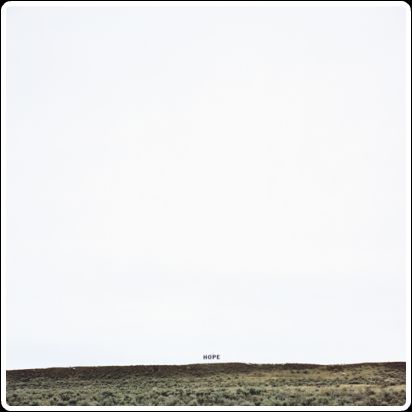
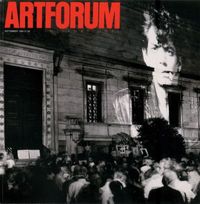 (Click image to enlarge)
(Click image to enlarge)1. Jen Graves on Christina Orr-Cahall, soon to be director and CEO of EMP, here. Good piece. What happened two decades ago at the Corcoran still matters. It's a decision that echoes outward, and 19 years of admirable service at the Norton cannot erase it.
What Graves didn't do is get inside the decision to cancel the Mapplethorpe show. That's because Orr-Cahall won't talk about it. Is there a gag order? What was going on with the Corcoran board? I heard indirectly from a couple of Orr-Cahall's friends that she was trapped between big-money board members who insisted the show be canceled and the very real fear that the government would cut off all Corcoran funding if the Mapplethorpe show proceeded.
Looks as if she took the bullet for the team. Yes, she did the wrong thing. If she couldn't proceed, she should have resigned, which is easy to say now.
One thing is clear: EMP blew its introduction. The museum needed to raise the issue and provide a response. Asked and answered. Instead, it counted on lazy or nonexistent press to ignore it.
(Michael Brenson on the 1989 cultural moment here. Richard Lacayo on the economic reality of the fallout here.)
One further thought: Graves compares the odious Helms to Hitler. If Helms had forced unruly artists into labor camps followed by liquidation, it would be a point worth making. Otherwise, it's an off-putting cliche. The shock value is gone. What's left is stale overkill. On the other hand, when Tony Curtis compared kissing Marilyn Monroe to kissing Hitler, he scored. The image of kissing refreshed the insult and made it stick.
2. Kenneth Baker on Wayne Thiebaud, here. An insightful Thiebaud review is essential for the Bay Area's premier newspaper, and Baker came through:
Thiebaud's early paintings of pastries and other foodstuffs took seriously the roots of still life as subject matter originally meant to domesticate high art for a nascent middle-class audience and market. His pictures did something analogous: They made the esoteric pleasures of brushwork, color and materiality democratically available by pushing parallels between paint and frosting, color and sweetness, intensities of visual and gustatory sensation.3. David Pagel's Elias Simé: Eye of the Needle, Eye of the Heart at the Santa Monica Museum of Art, here.
The new paintings use those tactics to disguise a meditation on the surrealism that lurks within all pictorial illusion.
4. Edward Winkleman on Julie Evan, here.
To step into the fantastically jam-packed installation now at the Santa Monica Museum of Art is to step into another world: a nuanced universe suffused with compassion, sensuality and wisdom, a place so far removed from the cold calculations and multi-tasking distractions of life in Los Angeles that it seems you have to be a specialist (or very privileged) to go there.
It's all too easy to see the 60-plus sculptures, 40-odd paintings, seven thrones and five wall reliefs by Ethiopian artist Elias Simé as an anthropologist would: ingenious artifacts from a fully formed culture fundamentally different from our own and probably part of a way of life being squeezed out by global consumerism.
But Elias Simé: Eye of the Needle, Eye of the Heart is nothing of the sort.
The thought that went through my mind as I viewed Julie's show (in addition to thinking she's been holding back on the sensuality quotient...these drawings are smokin' hot) was how sometimes an artist's accomplishments simply cannot be rushed. It can take just the right combination of life experiences, exposure to other ideas, and simply being in the right place at the right time for things to click. None of which may make sense to even the artist (or be particularly pleasant) at the time, but which definitely results in an eventual accomplishment that enriches our lives.
Dr. George Berkeley hinted darklyA review of Katherine Gray on Culture Monster is an excellent example of the type. It opens with an observation that might have been supportable 30 years ago:
If I cannot see you, you cannot be you.
Katherine Gray works in a medium -- glass -- that rarely takes center stage in a contemporary art gallery not already given over to craft or design.Onward to description, followed by more description:
The centerpiece of the show, Forest Glass, is an installation consisting of a pair of free-standing, clear acrylic shelving units, each roughly 9 feet tall and around the breadth of a coffee table, loaded with hundreds of mismatched thrift store glasses.
Good idea, stacked glass. Who has done it before? For starters, Tony Cragg, Louise Bourgeois, Dante Marioni, Josiah McElheny and Ann Gardner. Gardner stacked mismatched thrift-store glass in the 1990s, no examples online. All of these artists, by the way, have shown in contemporary art galleries (and museums) not already given over to craft or design.
I've got 2 large boxes completely full of old cassette tapes (remember those?) in my closet. There are probably over 400 tapes sitting there, degrading, losing their magnetic information, slowly dissolving into silence...Noise Addicts found an artist who turns played-out tapes into homages to the musicians whose songs were coded into their surfaces.
Portraits in audio tape by Iri5. Click to enlarge. More of her work here.
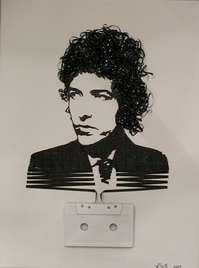
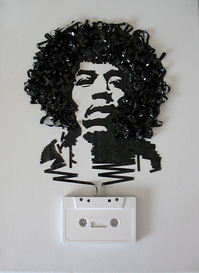
Dry on left, wet on right: click to enlarge.
Left to right: First row: Joe Biel and Juniper Shuey. Second row: Gretchen Bennett and Susan Robb. Third row: Debra Baxter and Alden Mason. Fourth row: Leo Saul Berk and Claire Cowie. Fifth row: Blake Haygood
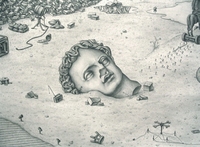
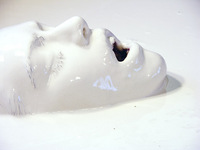 and Darren Waterston.
and Darren Waterston. When I was in third grade, finally trusted with my sister's vintage Nancy Drews, I ate them as I read them; not the whole thing but the crackly margins around the text - yellowed Communion wafers tasty as taco chips.
When I was in third grade, finally trusted with my sister's vintage Nancy Drews, I ate them as I read them; not the whole thing but the crackly margins around the text - yellowed Communion wafers tasty as taco chips.Artists do something similar, although to greater acclaim. They destroy books in order to honor them and make them their own.
The Book Borrowers: Contemporary Artists Transforming the Book is at the Bellevue Arts Museum through June 14.
 Although major figures from the art of the book (Anselm Kiefer, Ellen Gallagher, Ann Hamilton, Glenn Ligon, Tim Rollins and the Kids of Survival and Ed Ruscha), are not here, Book Borrowers is studded with gems. From the elaborate to the stark, the best fuse the container with the thing contained. (Click to see larger images.)
Although major figures from the art of the book (Anselm Kiefer, Ellen Gallagher, Ann Hamilton, Glenn Ligon, Tim Rollins and the Kids of Survival and Ed Ruscha), are not here, Book Borrowers is studded with gems. From the elaborate to the stark, the best fuse the container with the thing contained. (Click to see larger images.)1. Jennifer Khoshbin (Hood)
2. Brian Dettmer (New Book of Knowledge).
Other artists in the show are Noriko Ambe; Brian Dettmer; Long-Bin Chen; Jacquline Rush Lee; James Allen; Gary Berg; Casey Curran; Alan Corkery Hahn; Jane Lackey; Guy Laramée; Georgia Russell, and Yuken Teruya.
I could try (and probably fail) to match her with an essay on Seattle, but I'll stick to a question in response: Tobi: Does your bar write you letters?
From The Hideout to its customers:
There are just things that I forget about. Maybe it's the booze and the pills. I don't know, maybe I'm just growing old. I was at the grocery store the other day and bumped into a friend that I've know for years. And I open my mouth to say hi and I say "hi...." Fucking blanked out.
My eyes got big and I just smiled that dumb, unbelievable smile, the "I can't believe this shit" smile. And then I bobbed my head and followed it up with a solid "whatcha been up to", actually being serious, hoping that it connects some dot, triggers something in my brain, gives me a hint.
It's like driving on empty up a hill- come on, come on, come on- you start talking to your brain like a cheerleader- come on, come on- you can do it. And you know all about them- you know the car that they drive and the name of their girlfriend and the funny looking bookshelf in their living room. Give it to me! Give me the name! Paul- yes, Paul- of course. "Paul it is great to see you." And then I race for the produce section, repeating his name over and over again, hoping that repetition works. That if I say it enough my applesauce brain will capture it like a bug in amber.
The Dusty 45's are back tonight - First Thursday. It is free and easy. It's not a sales pitch, just a reminder of a good thing. So you don't wake up on Friday morning and go - now I remember! Instead of playing Dig Dug on my iPhone for three hours, I could have been at the Hideout and watched Billy Joe play trumpet and guitar and sing all at once (what the hell, how can anyone do that?) or Jerry pick a guitar like a blue crab scuttling down a beach.
And that girl in the corner who you know but forget her first name, or you think you know but if you are wrong you'll look like a total ass- just forget about it and ask her to dance or throw a shot back with you. It's a special night and I want to remind you about it.
The 5 Cent Discrete Theatre Grant, remember that one? Drink all night at the Hideout for one lousy nickel. It is a sweet deal. All you have to do is propose some understated, not so obvious performance in the bar, and if we like your idea, you drink all during your "performance" for a nickel.
In a crummy economy everyone is looking for deals. So I am gently reminding you, that if you are coming up a little short, don't stay at home reading junk mail, pitch us an idea and apply for a 5 cent Discrete Theatre Grant. You could meet your long lost father, be on a blind date, dress as a giant catapillar and drink Absinthe in the corner. I just wanted to remind you.
In suggesting that Culture Grrl's begging for money might not be the best way to attract support for an art blog, I tiptoed through the topic, so as not to cause personal offense. In truth, it drives me crazy. My masterpiece of understatement here.
CG (Lee Rosenbaum) replied with a picture of a hatchet, which is probably a play on my last name. Good one. I haven't heard it since grade school.
I understand it's tough to make a living writing about art, and that until lately I've done so from the privileged position of a union job.
So, what do I know about it? I know what Odgen Nash would say.
In Bankers Are Just Like Anybody Else, Except Richer, he offered advice that any freelance arts blogger would do well to heed. To wit:
Most bankers dwell in marble halls,Nash died in 1971. He was thinking of pre-Bush administration, tightly regulated banks. Throw the old rules out, what happens? The rules are old, but they apply to writing about art, running a gallery or even trying to get a date.
Which they get to dwell in because they encourage deposits
and discourage withdrawals,
And particularly because they all observe one rule which woe
betides the banker who fails to heed it,
Which is you must never lend any money to anybody
unless they don't need it.
Desperate for a date? Your phone will not ring.
He opens at the Seattle Art Museum on Friday in an exhibit titled, History in the Making. Preview lecture on YouTube.
1. From Charles Mudede via Pixdaus. 2. From Helmut Smits via Fred Muram. (Click to enlarge.)
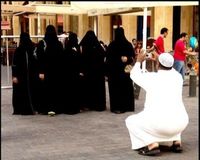
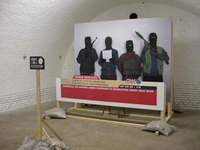
Lest we should see where we are,Auden, September 1, 1939, here.
Lost in a haunted wood, ...
Children afraid of the night
Who have never been happy or good.
Click to enlarge images. 1.Joe Biel 2.Dan Webb 3. Joseph Mills 4. Pat DeCaro
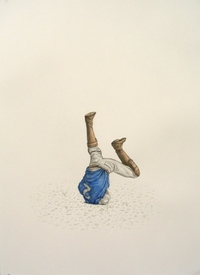
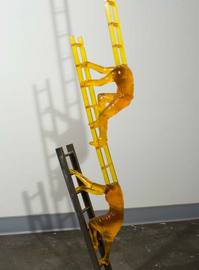
No such caution is needed in Seattle, because there are no theater critics to receive it. Almost none. There's the great Brendan Kiley at the Stranger, but press releases are beneath his dignity. And there's workhorse Misha Berson of the Seattle Times, but she's so committed to print and averse to online that April 1 will be over before she can respond, so she won't.
That leaves, I suppose by default, an art critic. From Stephanie Coen of Intiman Theatre:

SEATTLE-- On Wednesday, April 1, the Hammering Man, one of Seattle's most beloved icons, shocked onlookers when he committed a double murder, with an axe. Inspector Porfiry of the St. Petersburg police, currently on a sight-seeing tour of Seattle, managed to take the attached photo moments after the event, which is being investigated as "a murder with a psychological explanation." The story behind the Hammering Man's crime and punishment will be revealed at Intiman Theatre, where a 90-minute version of Dostoyevsky's psycho-thriller -- ironically titled Crime and Punishment -- opens on Friday, April 3 and plays through May 3. The Hammering Man -- who is also known in certain circles as #3277164 -- has never before exhibited any signs of violence, nor has he expressed the idea that he is an "extraordinary man" who has the right to kill. Inspector Porfiry is consulting on the investigation, and will help the Seattle police determine whether the Hammering Man should be sent to Siberia.
To make sure I - the single, solitary member of the press who might think Hammering Man is involved in the production - understand it's a joke, Coen went on:
In other news, Intiman is responding to the current economic crisis in innovative ways. Its 2006 Tony Award for Outstanding Regional Theatre is now for sale on eBay.And:
Despite the economy, however, Intiman will not make across-the-board cuts: Joan Didion's solo show The Year of Magical Thinking will be performed by both Penn and Teller.
Well done, Ms. Coen. Her email here. Intiman's killer You Tube advance below:
Of course, Hammering Man might be involved. That's the thing about jokes. Within one, a kidding-on-the-square sometimes lies coiled.
* Tyler Green's two-part report on an interview with Robert Frank at the National Gallery of Art, here and here.
* Sharon Butler's illuminating discussion on Two Coats of Paint of oil paint application, that "full strength oil colors with high absorption, especially lamp and ivory black, should never be overpainted with pigments of lower oil content." Noted.
* Wooster Collective on the latest Dan Witz, here.
* D. K. Row on William Jamison's beautiful men, here.
* Emily Pothast on Mandy Greer, here.
* And Joey Veltkamp on high points of exhibits opening in Seattle on Thursday. Good list. Wish I'd written it.
About
Blogroll
AJ Blogs
AJBlogCentral | rssculture
Terry Teachout on the arts in New York City
Andrew Taylor on the business of arts & culture
rock culture approximately
Laura Collins-Hughes on arts, culture and coverage
Richard Kessler on arts education
Douglas McLennan's blog
Dalouge Smith advocates for the Arts
Art from the American Outback
Chloe Veltman on how culture will save the world
For immediate release: the arts are marketable
No genre is the new genre
David Jays on theatre and dance
Paul Levy measures the Angles
Judith H. Dobrzynski on Culture
John Rockwell on the arts
innovations and impediments in not-for-profit arts
Jan Herman - arts, media & culture with 'tude
dance
Apollinaire Scherr talks about dance
Tobi Tobias on dance et al...
jazz
Howard Mandel's freelance Urban Improvisation
Focus on New Orleans. Jazz and Other Sounds
Doug Ramsey on Jazz and other matters...
media
Jeff Weinstein's Cultural Mixology
Martha Bayles on Film...
classical music
Fresh ideas on building arts communities
Greg Sandow performs a book-in-progress
Harvey Sachs on music, and various digressions
Bruce Brubaker on all things Piano
Kyle Gann on music after the fact
Greg Sandow on the future of Classical Music
Norman Lebrecht on Shifting Sound Worlds
Joe Horowitz on music
publishing
Jerome Weeks on Books
Scott McLemee on books, ideas & trash-culture ephemera
theatre
Wendy Rosenfield: covering drama, onstage and off
visual
Public Art, Public Space
Regina Hackett takes her Art To Go
John Perreault's art diary
Lee Rosenbaum's Cultural Commentary
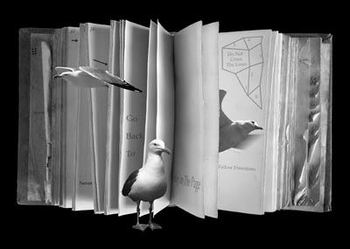
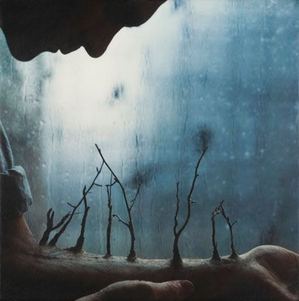
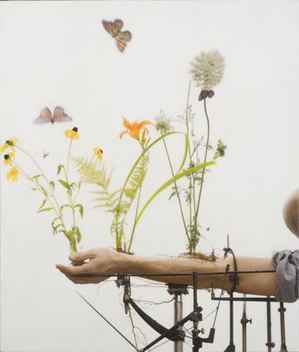

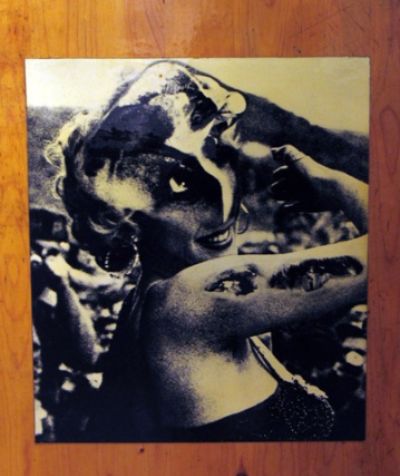
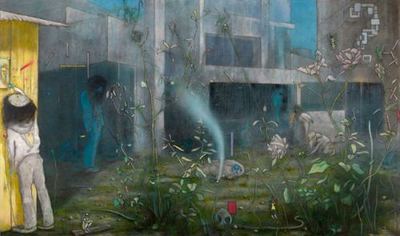
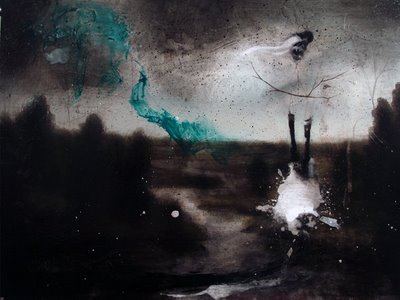
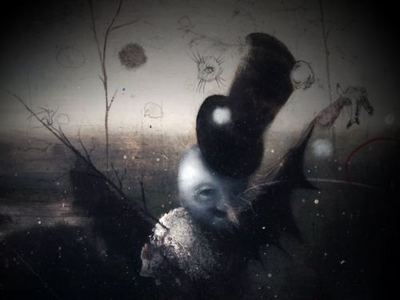

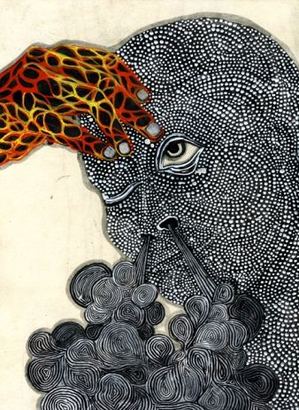
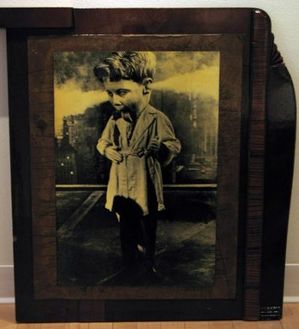
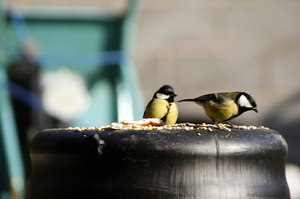
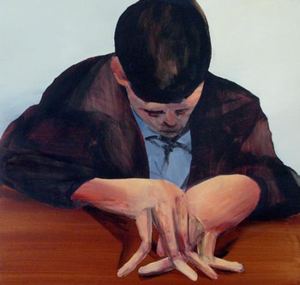
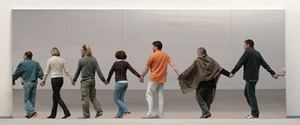
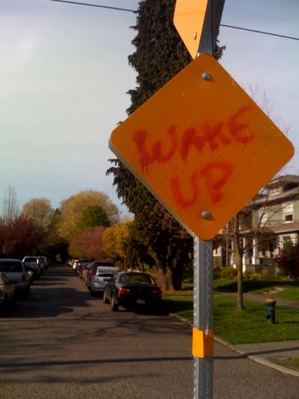
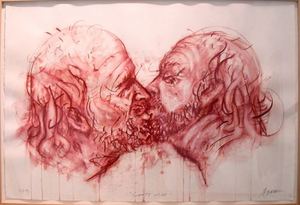
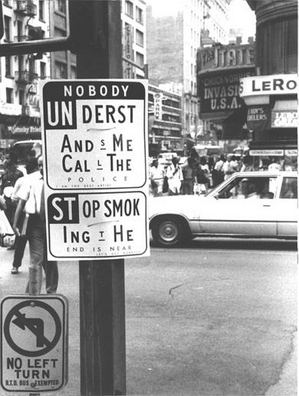
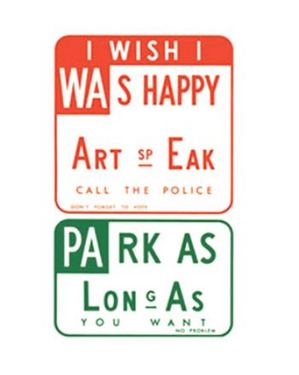
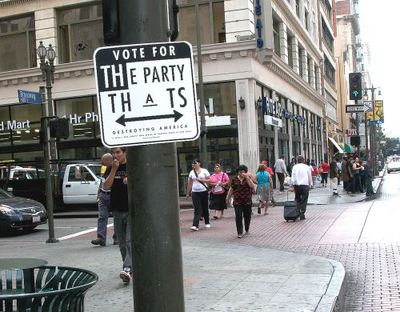

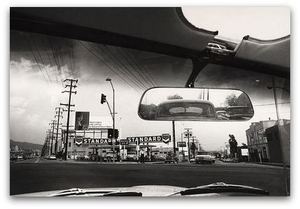
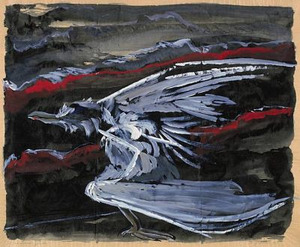
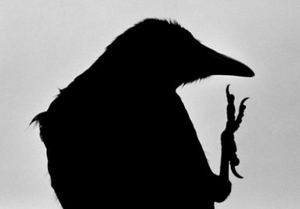
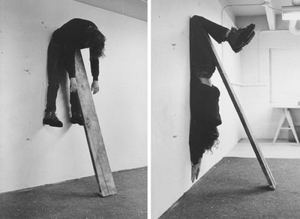
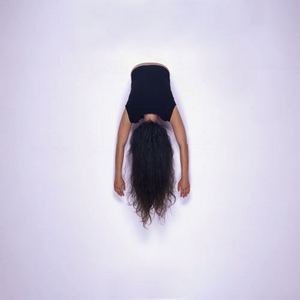
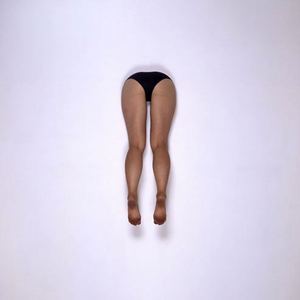

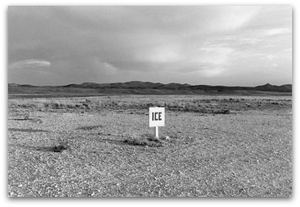
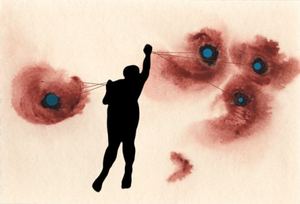
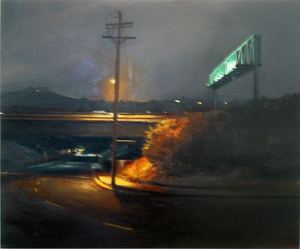
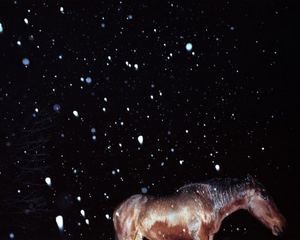
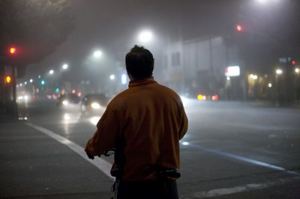
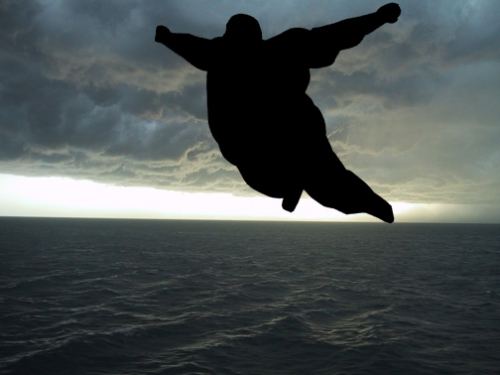

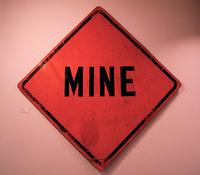
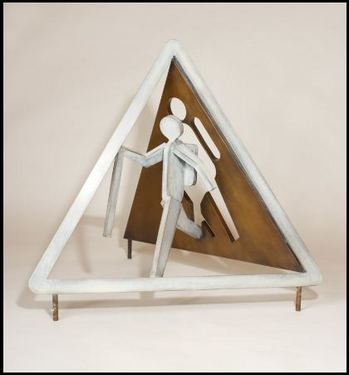
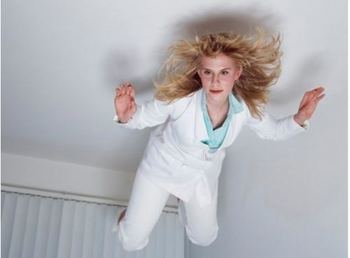
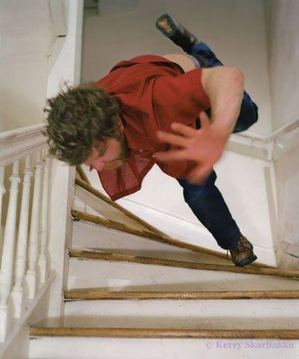
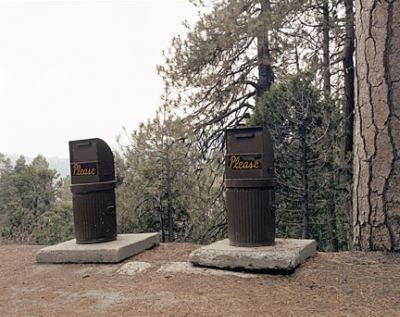
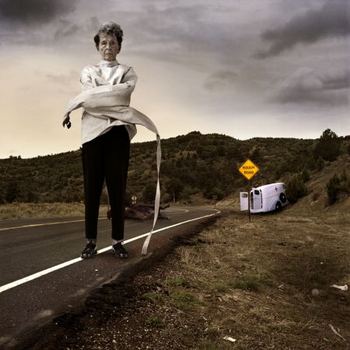
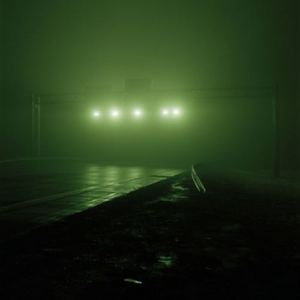
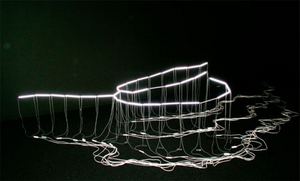







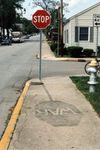




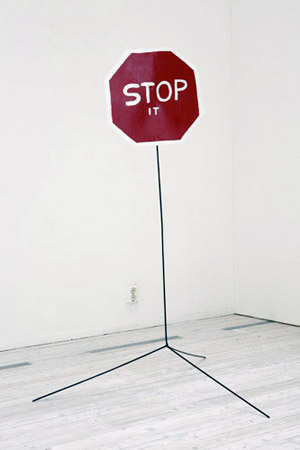















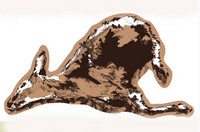
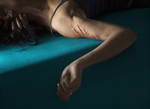
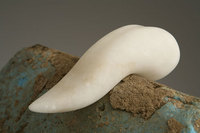
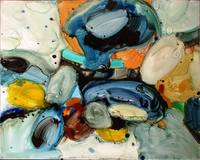
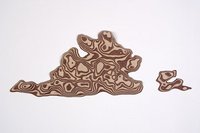
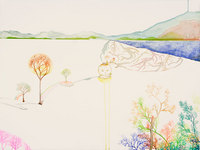
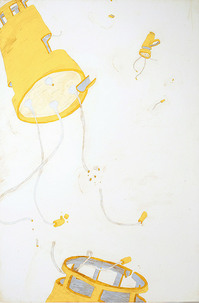
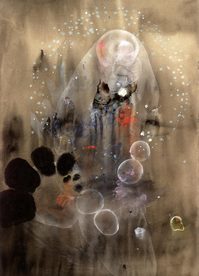
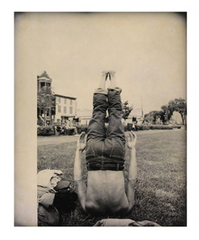
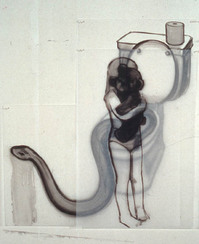

Recent Comments